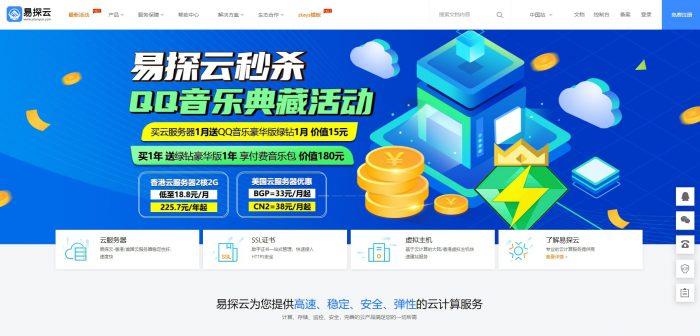preletmecry
letmecry 时间:2021-01-15 阅读:()
BEJ.
Macroecon.
2016;16(1):145–170ContributionsSerdarVarlikandM.
HakanBerument*Creditchannelandcapitalflows:amacroprudentialpolicytoolEvidencefromTurkeyDOI10.
1515/bejm-2015-0052PreviouslypublishedonlineAugust26,2015Abstract:Rapidcreditgrowthinducedbysuddencapitalinflowsmaynegativelyaffectacountry'seconomicperformance,withtheresultingoutflowsturningintoafinancialcrisis.
ThepurposeofthisstudyistodeterminewhethercontrollingthecreditchannelofmonetarypolicycouldbeusedasamacroprudentialtooltosuppresstheeffectsofsuddencapitalinflowsoneconomicperformanceforsmallopeneconomieslikeTurkey.
Inthispaper,usingtheVectorAutoregres-sionmethodologyemployedby(Bernanke,S.
B.
,M.
Gertler,andM.
Watson.
1997.
"SystematicMonetaryPolicyandtheEffectsofOilPriceShocks.
"BrookingsPapersonEconomicActivity1:91–157),weinvestigatewhethershuttingdownthecreditchannelhelpsreducetheeffectsofcapitalinflows.
Indeed,empiricalevi-dencefromTurkeyshowsthatdoingsodecreasestheeffectsofcapitalinflowsonimportsandindustrialproduction,butfurtherdecreasesinterestrateandpricesandfurtherappreciatesthedomesticcurrency.
Therefore,itmaybeprudenttosupportcreditcontrolwithadditionalpolicytoolstopreventafurtherdecreaseininterestrateandpricesandafurtherappreciationofthedomesticcurrency.
Keywords:capitalflows;creditchannel;macroeconomicprudentialpolicy.
JELCodes:E51;E52;E58.
1IntroductionCapitalinflowsasportfolioinvestmentsmayaffectacountry'seconomicper-formanceadverselybecauseoftheexternalfragilityofthedomesticfinancial*Correspondingauthor:M.
HakanBerument,DepartmentofEconomics,BilkentUniversity,06800,Ankara,Turkey,Phone:+903122902342,Fax:+903122662529,e-mail:berument@bilkent.
edu.
trSerdarVarlik:DepartmentofEconomics,HititUniversity,19040,Corum,Turkey146SerdarVarlikandM.
HakanBerumentmarket,especiallyifachievedthroughthebankingsystemwheninflowedcapitalturnstooutflowedcapital.
Thiseffectoneconomicperformance,frequentlyworkingthroughthecreditchannel,precipitatesfluctuationsinbanks'balancesheetsandmaydecreasecreditquality.
Moreover,currencyappreciationmaydamagepricestabilityandaggravatethecurrentaccountdeficitwithintheframe-workoffinancialstability.
Sincethe2008globalfinancialcrisis,themagnitudeofcapitalflowshasbecomeafactorinthefinancialstabilityofsmallopenecono-mies.
Suchcountries,includingTurkey,havebeguntoadoptvariousmacropru-dentialpolicytoolstopreventtheadverseeffectsofcapitalinflows;controllingbankcreditgrowthisonesuchtool.
Thispapercontributestotheliteratureonthesubjectbyprovidingevidenceforwhetherthecreditchannelcanbeusedasamacroprudentialtooltosuppresstheeffectsofsuddencapitalinflowsoneco-nomicperformanceforsmallopeneconomieslikeTurkey.
Suddencapitalinflowsmaycauseasurplusincreditsupply,looseningcreditstandardsandthusresultinginexcessivecreditgrowth(alsocalledacreditboom).
Thissituationcanthreatenpricestabilityandfinancialstabilitybyenlargingcurrentaccountdeficits,buoyingassetpricesandincreasingdomes-ticdemand.
Suddencapitalinflowsalsoincreasethebankingsector'sforeign-currency-denominatedliabilities(Gourinchas,ValdesandLanderretche2001;ElekdaandWu2011;Magudetal.
2012).
Adversely,aslowdowninshort-termcapitalinflows,suchasiftheeconomyencountersthesuddenstopproblem,maydamageeconomicperformancethroughthecreditchannelandevenresultinafinancialcrisis(Calvo1998;ReinhartandCalvo2000).
Barajas,Dell'Ariccia,andLevchenko(2009)callthisscenarioabadcreditboom,anditoccursbecausecentralbanks,especiallyindevelopingcountries,focusontheexcessivecreditgrowthwithoutplanningfortheproblemsthatcanoccurwhensuddencapitalinflowsstop.
Interestrate,whichisusedasthebasicmonetarypolicytoolbycentralbanksunderaconventionalpolicysettinginsmallopeneconomies,maynotbethebesttooltocontrolcredit.
Forexample,whencentralbanksinthesecoun-triesincreasethepolicyinterestratetocooldowntheeconomyandslowcredits,capitalflowsandcreditsincrease,stimulatingtheeconomy.
Thus,stirringupcapitalinflowsfeedscreditsratherthanconstrainingthem(Hahmetal.
2012).
Thisresultissimilartoanotherdilemma,thatis,whencentralbanksdecreasethepolicyratetodiscouragecapitalinflows.
Alowerinterest-ratepolicymaysparktheassetpricebubble,whichcausescredit-drivenand/orirrationalexuberance(seeMishkin2010).
Lowinterestratesmayalsoresultinexcessiverisktakingintheeconomy,thechannelcalledthe"risk-takingchannelofmonetarypolicy"(BorioandZhu2008,p.
iii).
Alowinterest-ratepolicycancauseanincreaseinthenetinterestratemarginforfinancialinstitutions,whichprovidesmoreprofitCreditchannelandcapitalflows147(AdrianandShin2010),andtherefore,theseinstitutionsmaychoosetoincreasetheleverageratioandsotakeonmoreriskyinvestments,whichincreasesassetprices,loosenscreditsandprecipitatesafinanciallyunstableenvironment.
Thereby,onitsown,interestratemaynotbeaneffectivepolicytooltostabi-lizethefinancialsystem.
Theseemergingdeficienciesinconventionalmonetarypolicysincetheglobalfinancialcrisismaysuggestusingalternativemacropru-dentialpolicytoolsthatcomplementthepolicyratetoolinanunconventionalmonetarypolicyframework.
TheTurkisheconomyprovidesaconvenientenvironmentinwhichtostudytheeffectofcreditcontroloncapitalflowineconomicperformance.
Thecreditchannelisawell-recognizedmethodofusingmonetarypolicytoaffecteco-nomicperformance(seeMishkin1996;Boivin,Kiley,andMishkin2010),andaveryimportantchannelforsmallopeneconomieslikeTurkey.
1Thepurposeofthispaperisnottodocumenttheexistenceorworkingsofthecreditchannelbuttoassesswhethercontrollingthecreditsofthedomesticbankingsystemdecreasestheeffectsofcapitalinflowsonasmallopeneconomy.
Hence,weanalyzetheimpactsofcapitalflowshocksontheeconomicperformanceoftheTurkisheconomythroughthecreditchannelbyusingBernanke,GertlerandWat-son's(1997)VectorAutoregression(VAR)methodology.
TheempiricalevidencegatheredfromtheTurkishcasesuggeststhatshuttingdownthecreditchanneldecreasestheeffectsofcapitalinflowsonimportsandindustrialproduction,butfurtherappreciatesthedomesticcurrencyanddecreasespricesandinterestrates.
Therefore,wesuggestthatcreditcontrolsmightbeonlyoneofasetoftoolsinmacroprudentialpolicytosuppresstheadverseeffectsofcapitalflows.
Turkeyachievedexternalfinancialliberalizationin1989,andsincethen,therelationshipbetweensuddencapitalinflowsandcreditgrowthhasbeengrowingstronger,threateningfinancialstability.
BaandKara(2011)(gover-norandchiefeconomistoftheCentralBankoftheRepublicofTurkey(CBRT),respectively),zatay(2011)(formerCBRTdeputygovernorandformermemberoftheCBRT'sMonetaryPolicyCommission),AkkayaandGürkaynak(2012)(twoacademicians)andKara(2012)statethatsuddencapitalinflowsdramaticallybringabouttwoimportantresultsforTurkey:excessivecreditgrowthandcur-rencyappreciation.
TheCBRTadmitsthatthesetwofactorsasaresultofcapitalinflowsmayresultinpriceinstabilityandfinancialinstability.
TheCBRT(2012a)andAlper,Kara,andYrükolu(2013)indicatethatrapidcurrencyappreciationinducedbycapitalinflowsmayaffectfirms'willingnesstoborrow,leadingtoan1InTurkey,thefinancialsystemischaracterizedbylowfinancialcapitalizationintheequitymarket,lowsecuritizationandlowopportunitiesforrefinancing(suchasforhousingrefinancing).
Forthisreason,thebankingsystemplaysabigroleinthecreditmarket.
148SerdarVarlikandM.
HakanBerument2See,forexample,BernankeandBlinder(1992),Sims(1992),GertlerandGilchrist(1994),BernankeandGertler(1995),Hubbard(1994),Cecchetti(1999),KishanandOpiela(2000),KashyapandStein(2000),Ashcraft(2006),Fuinhas(2008)andevikandTeksz(2012).
IntheTurkishcase,Gündüz(2001),engnülandThorbecke(2005),Arena,Reinhart,andVasquez(2007),Brooks(2007),Demiralp(2008),Cambazolu,andGüne(2011)andAlper,Hülagu,andKele(2012)arguethatusingthecreditchannelformonetarypolicyoperatesefficientlyinTurkey,butavuolu(2002),iek(2005)andAydinandIgan(2010)donotagree.
excessivelendingappetiteinbanks.
Thus,thebankingsectorincreasescreditstotheprivatesectorexcessively,whichcausesdomesticdemandtogrowfasterthanaggregateincome.
Thisprocessiscalledafinancialacceleratormechanism,andamplifiesbusinesscycles.
Eventually,thecurrentaccountdeficitdramati-callyincreases,inparallelwithcreditboomsandcurrencyappreciation,whichresultsinmacroeconomicinstabilityandevenfinancialcrisis(Ganiolu2012).
Anunforeseeableincreaseincreditgrowthandcurrencyappreciationinducedbyintensivesuddencapitalinflows(alsocalledhotmoney)negativelyaffectthecurrentaccountbalance.
Forexample,in2010,CBRTgovernorYlmazestimatedthata5%increaseincreditgrowthwouldtriggera2.
1%increaseinthecurrentaccountdeficitinTurkeyfortheyear2011(Ylmaz2010).
Therefore,controllingexcessivecreditgrowthmayforestallahighcurrentaccountdeficit.
AkayandOcakverdi(2012)alsosuggestthatcontrollingexcessivecreditgrowthmaysig-nificantlyreduceTurkey'shighcurrentaccountdeficit.
AccordingtoKaraetal.
(2014),anaverageannualcreditgrowthof15%forTurkeywouldbereasonableinthemediumterm.
InthesummaryofitsMonetaryPolicyCommitteeMeetingofJanuary29,2013,theCBRTstatedthat"[m]acroprudentialmeasureswillcontinuetobetaken,should…creditgrowthexpectationsexceed15%foralongperiod.
"Thereissubstantialempiricalresearchanalyzingthevalidityofthecreditchannelformonetarypolicy.
2Therelatedliteratureisenlargedwiththeroleofcapitalflowshocksoncredits,especiallyfordevelopingcountries.
Thesestudiesfocusonthecreditgrowthinducedbycapitalinflows(see,forexample,Gourinchas,ValdesandLanderretche2001;TornellandWestermann2002;Duenwaldetal.
2005).
Thisliteraturehasbeengrowingrapidlysincetheglobalfinancialcrisis:MendozaandTerrones(2008),BakkerandGulde(2010),Borioetal.
(2011),Shin(2012),CetorelliandGoldberg(2012)andLaneandMcQuade(2013)allpointoutthatcapitalflowsandinternationalliquiditydeterminefluc-tuationsincredits(boomandbusts)throughthecreditchannelandthusdeter-mineeconomicperformance.
Allauthorsunderlinetheadverseeffectsofcreditgrowthinducedbysuddencapitalinflows,andtheTurkishcasehasplentyofevidenceshowingthisrelationship(seeAlperandSalam2001;AslanandKorap2007;ToganandBerument2011;BiniciandKksal2012).
Creditchannelandcapitalflows149Thispaperisorganizedinsixsections.
InSectionII,webrieflyexplaintherelationshipamongcapitalflows,creditsandthecurrentaccountbalanceinTurkey.
InSectionIII,weoutlinethemethodologyemployedtoassesstheeffectofshuttingdownthecreditchannel.
SectionIVpresentstheempiricalevidenceunderalternativescenarios.
SectionVprovidesasetofrobustnessanalysesandSectionVIconcludesthepaper.
2TherelationshipbetweencapitalflowsandcreditsinTurkey:ashortstoryThebankingsectorplaysanimportantroleinthefinancialmarket,especiallyfordevelopingcountriessuchasTurkey,duetothesector'sbiggershareinthewholefinancialsystemcomparedtodevelopedcountries;banksnotonlydeterminefinancialdeepeningandbutalsotheefficiencyofmonetarypolicy(seeCecchetti1999).
IntheTurkishcase,thebankingsector'sshareofthebalancesheetinthefinancialsystemwas91.
5%in2004and87.
6%in2012(CBRT2005,2013).
Althoughthesharewaslowerin2012,thebankingsectorremainshighlydominantoverall;whilethepercentageassetshareofthebankingsectorintheGDPwas71.
2%in2004,thisratioreached98%in2012(BankingRegulationandSupervisionAgency2006,2012).
Therefore,thecreditchannel,especiallythebanklendingchannel,isimportantfortheTurkisheconomy.
Sincetheintroductionofstructuralreformsin2001,thecreditchannelhasbeenworkingmoreefficientlythanothermonetarypolicytransmissionmechanisms(Ba,zel,andSarkaya2007).
Toassesstheimportanceofcreditgrowth,wefirstprovideasetofdescrip-tivestatistics(Table1).
Thetableshowsahighcorrelationbetweencreditsandeconomicperformance,whichsuggeststheimportanceofthecreditchannel.
Thecorrelationcoefficientsbetweencreditsandimports,betweencreditsandindus-trialproductionandbetweencreditsandconsumerpriceindexaremorethan0.
85.
Furthermore,thecorrelationcoefficientbetweencreditsandcapitalflowsis0.
66,whichshowsthecloserelationshipbetweencreditsandcapitalflows.
Figure1showstherelationshipbetweencreditsandcapitalflows,andbetweencreditsandthecurrentaccountdeficit.
Whilerealcreditgrowthandcapitalandfinancialaccountsmovetogether,realcreditgrowthandthecurrentaccountdeficitmoveintheoppositedirectionfromeachother.
Todetectthefundamentalrelation-shipbetweencreditsandcapitalinflowsinTurkey,wefocusontheyearssinceexter-nalfinancialliberalization(1989onward).
Respectively,increasesanddecreasesinrealcreditgrowthhavebeenaccompaniedbycapitalinflowsandoutflowssincethe1990s.
AsevidentinFigure1,duringthe1994financialcrisis,whileincrease150SerdarVarlikandM.
HakanBerumentinrealcreditfirstslowedandthendecreaseddependingoncapitaloutflows,thecurrentaccountdeficitalsodecreasedandthussodidthecurrentaccountsurplus.
Similarly,the1998AsianfinancialcrisisinducedcapitaloutflowsfromTurkeybecauseofdecreasedglobalriskappetite.
Thesecapitaloutflowsledtodecreasesinrealcreditgrowthandcurrentaccountdeficits.
Thisstoryamongcapitalflows,creditsandcurrentaccountshasrepeatedlyplayedoutinTurkey,especiallysince1999.
Whencapitalinflowsinthepre-financial-crisisperiodturnedintocapitalout-flowsduringtheNovember2000andtheFebruary2001financialcrises,realcreditgrowthdramaticallycontracted,andcorrespondingly,acurrentaccountsurplusemerged.
InApril2001,thegovernmentannouncedtheTransitiontoaStrongEconomyProgram,whoseaimsincludedbankingsectorsoundness,pricestabil-ityandloweredfiscaldominance;an(implicit)inflationtargetingstrategybeganinJanuary2002.
Alsoin2002,theBanks'AssociationofTurkeyandtheBankingRegulationandSupervisionAgency(BRSA)announcedtheIstanbulApproach,Table1:Correlationcoefficentsbetweennominalandrealcreditsandothervariables.
CapitalandfinancialaccountHotmoneyExchangeratebasketInterbankrateImportsIndustrialproductionConsumerpriceindexCurrentaccountbalanceNominalcredit0.
660.
540.
76–0.
510.
910.
850.
88–0.
80Realcredit0.
660.
520.
74–0.
500.
930.
870.
87–0.
82Source:CBRT.
–2–1.
5–1–0.
500.
511.
522.
51992Q11993Q31995Q11996Q31998Q11999Q32001Q12002Q32004Q12005Q32007Q12008Q32010Q12011Q32013Q1Capitalandfinancialaccount/GDPRealcreditgrowth/GDPCurrentaccountdeficit/GDPFigure1:TheRelationshipbetweenrealcreditgrowthandbalanceofpayment.
Source:CBRT.
Creditchannelandcapitalflows151whichengagedinareconstructionoffirms'credits.
In2005,BankingLawNo.
5411wasenacted,coveringprudentialregulationsforbanks'creditstandards.
Asaresultofthesemeasures,capitalinflowstoTurkeyincreased;correspondingly,realcreditgrowthincreasedandthecurrentaccountdeficitdrasticallyincreased.
Meanwhile,inDecember2006andFebruary2008,theBRSAincreasedgeneralprovisionsforloansinordertocontrolthecreditriskcarriedbythebankingsector'sbalancesheet.
Whenweanalyzetheperiodsincethe2008globalfinancialcrisis,weseethatadecreaseinglobalriskappetiteandanincreaseinTurkey'sriskpremiumprimarilyslowedcapitalinflowstoTurkey,buttheninitiatedcapitaloutflows.
Throughout2009,realcreditgrowthrapidlydecreased,whichcausedadecreaseinthecurrentaccountdeficit.
Nevertheless,theCBRT'smonetarypolicies(suchasreducingthepolicyrateandthereserverequirementratioafter2008)andtheincreasedcapitalinflowsasaresultofsoaringgloballiquidity,inducedespeciallybytheUSFederalReserve'sQuantitativeEasing-IIpolicy,reinitiatedanincreaseinrealcreditgrowthatthebeginningof2010.
Thereupon,withintheframeworkofitsMonetaryPolicyExitStrategy,implementedinApril2010,theCBRTbegantoincreasereserverequirementratiostopreventrapidcreditgrowth.
RememberthattheCBRTdeterminesthedifferentreserverequirementratiosfordomestic-andforeign-currency-denominateddeposits.
Inthisway,itaimstoincreasetheefficiencyofthereserverequirementratio3(BaandKara2011;Kara2012).
InSeptember2010,theCBRTterminatedinterestpaymentsforreserverequirementsdenominatedbydomesticcurrency.
Then,inDecember2010,theCBRTdifferenti-atedreserverequirementratiosfordepositsatdifferentmaturities,andexpandedthescopeofreserverequirements.
However,thisincreaseinreserverequirementratiosdidnotcurbcreditgrowth;conversely,creditgrowthdrasticallyincreasedandthecurrentaccountdeficitincreasedaswell.
4Therapidcreditgrowthonly3Ontheotherhand,theCBRThasbeenalteringtheframeworkofitsmonetarypolicysincethelastquarterof2010byusingnewmonetarypolicytoolssuchasanasymmetricinterestratecorri-dorandthereserveoptionmechanism(ROM)topreventthedomesticeffectsofexternalfragility,suchasexcessivecreditgrowthandcurrencyappreciationinducedbysuddencapitalinflows(CBRT2011;Akeliketal.
2013).
ThisnewapproachinvolvedaparadigmshiftinmonetarypolicypracticeforTurkey(er2011).
4zatay(2011)ascribesthefailureofthereserverequirementpolicytocontrolcreditgrowthtothebankingsystem'sclosesubstitutionrelationshipsregardingliabilitiesmaturities.
AkkayaandGürkaynak(2012)agree;theirstudysuggeststhatthereserverequirementpolicyfailedbecausewhentheCBRTincreasedreserverequirementratios,bankssteeredtowardsnon-depositfundssuchasforeignswapstofinancecredits.
Therefore,notonlydidthechange-of-deposit-to-total-assetratioincrease,butsodidthecredits-to-total-assetratio.
er(2011)andzatay(2012)maintainthatastheCBRTincreasedreserverequirementratios,bankscompensatedbydimin-ishingliquiditybyagainborrowingfromtheCBRT'sopenmarketoperations.
Inthatcase,thereserverequirementpolicywasnotanefficienttoolforreducingcredits.
152SerdarVarlikandM.
HakanBerumentbegantoslowaftertheBRSAimplementedamicroprudentialpolicytosupporttheCBRT'smacroprudentialpolicy,increasingtherateofitsResourceUtilizationSupportFundandLoan-to-Valueratio(CBRT2012b).
Asaresultoftheongoingslowdownintheglobaleconomy,andbecauseofthecombinedeffortsoftheCBRTandtheBRSA,creditgrowthcamedownto"reasonablelevels"bytheendof2012(CBRT2012b,p.
iv).
Furthermore,theCBRT(2012a)determinedthetargetsforanaverageannualrateofincreaseincreditgrowthtobe15%,whichreflectedthecreditruleformonetarypolicyin2013.
Thus,ontheonehand,theCBRTbegantouseanasymmetricinterestratecor-ridorsystemtodiscouragecapitalinflowsandtopreventanannualcreditgrowthofmorethan15%,andontheotherhand,itimplementedtheROMandreserverequirements,respectively,toprovidecurrencyandcreditgrowthstability.
Con-trollingcreditgrowththusplaysalargepartintheCBRT'snewmonetarypolicyframeworkintermsofpricestabilityandfinancialstability.
3MethodologyInthissection,wefirstintroducethebenchmarkVARspecificationthatweusetoassesstheeffectsofcapitalflowsoneconomicperformance.
Later,weoutlinehowtheeffectsofcapitalflowsoneconomicperformancearegatheredbykeepingthecreditlevelconstant.
ThebenchmarkVARspecificationistheregularVARspecification,whichincludesvariablesasameasureofcapitalflow,exchangerate,interestrate,credits,imports,incomeandprices.
Weusealagorderoftwo,assuggestedbytheBayesianInformationCriteria(BIC).
Weinclude11monthlydummiestoaccountforseasonality.
Moreover,toaccountforfinancialcrisisperiods,weincludeinter-ceptdummiesforeachperiodfromthesecondtothefifthmonthsof1994,theeleventhmonthof2000andthesecondmonthof2001.
Toidentifycapitalflowshocks,weemploytheCholeskydecomposition;thus,theorderofvariablesisimportant.
Allvariableplacementsareaffectedbytheprecedingvariablescontemporaneouslybutarenotaffectedbythelattervari-ablescontemporaneously.
However,allthevariablesaffecteachotherwithalag.
Thevariablesareorderedascapitalflowmeasure,exchangerate,interestrate,credits,imports,industrialproductionandconsumerpriceindex.
Thus,capitalflowmeasuresaffectcapitalflowmeasures,exchangerate,interestrate,credits,imports,industrialproductionandconsumerpriceindexcontemporaneouslybutarenotaffectedbythesevariablescontemporaneously.
Similarly,exchangerateisaffectedbycapitalflowscontemporaneouslyandaffectssubsequentvariablesCreditchannelandcapitalflows153contemporaneously.
However,again,allofthesevariablesaffecteachotherwithalag.
Theorderofvariablesmustbediscussed.
Turkeyisasmallandopeneconomy.
Ithasavolatilemarket,andfor2011,attractedonly0.
059%5ofthetotalcapitalflowsto30emergingmarketsconsideredbytheInstituteofInternationalFinance(IIF),eventhoughitistheeighteenth-largesteconomyintheworldaccordingtotheWorldBank.
Thus,Turkeyisasmallplayeringlobalcapitalflowmarkets.
ItisnotthatTurkey'seconomicperformanceaffectscapitalflowstoTurkey,butthatcapitalflowsaffectTurkey'seconomicperformance,possiblyduetothecountry'squestionablepolicyframeworksandpreviouspoliticaluncertainties(IIF2014).
Thus,weordercapitalflowsfirst.
Forcapitalflowstoaffectthedomesticeconomytheyneedtobeconvertedtodomesticcurrency,becausebytheirnature,capitalflowsareinforeigncurrency.
Thus,weplaceexchangeratesecond.
Thethirdvariableisshort-terminterestrate,whichtheCBRTconsidersapolicytool(see,forexample,Berument2007;lkeandBerument2014).
Weplaceinterestratebeforecredits,imports,outputmeasureandprices.
Thisorderingsuggeststhattheconductofmonetarypolicyaffectstheseeconomicvariablescontemporane-ously.
Placinginterestrateafterthesevariableswouldhaveassumedtheextremeinformationassumption,whichwouldhavesuggestedthattheCBRTknewthesemacrovariablesforagivenmonth.
OurorderingisparalleltoLeeper,Sims,andZha(1996)andSimsandZha(2006).
Sinceweconsidercreditcontrolasamon-etarypolicytool,weplacecreditsjustafterinterestrateandbeforeimports.
Placingcreditsbeforeimportsisparallelwiththeargumentthatcreditexpansionincreasesthecurrentaccountdeficitthroughhigherimportdemand(seeIMF2012;Aysan,Fendolu,andKln2014).
WeplacetheimportmeasurebeforetheoutputmeasurebecauseTurkeyisasmallopeneconomywithhighenergyinputsandrawandintermediateproductimportdemandsforitsproduction.
Thisorder-ingisparalleltoSvensson(1998)andLeitemoandSderstrm(2001).
Thelasttwovariablesareoutputandprices.
Sincepricesrespondslowerthanoutput,weplaceoutputbeforeprices.
Toassesstheeffectsofcapitalflowsoneconomicperformancewhenthereisnocreditgrowth,weemploytheVARmethodologyusedbyBernanke,GertlerandWatson(1997).
TheyinvestigatethedirectandindirecteffectsofoilpriceshockonaneconomybyconsideringasmallVARsystem,followingpolicyalternativesregardinghowthemonetarypolicymeasureoftheFederalFundsRaterespondstooilshocksundervariousscenarios.
Usingourvariablesintheiralternativepolicysimulations,weconsidertwoscenarios.
Firstisthebasescenario,where5Authors'calculationfromInstituteofInternationalFinancedata(2013)andtheCBRT'sElec-tronicDataDeliverySystem(EDDS).
154SerdarVarlikandM.
HakanBerumentthecontrolpolicyvariable(interestratesintheirspecificationandcreditinourspecification)respondstodevelopmentsintheeconomyandwherethecontrolpolicyvariableaffectseconomicperformancecontemporaneouslyorwithlags,dependingontheidentificationassumptions:thismodelisbasicallytheconven-tionalunrestrictedVARmodel.
Thealternativepolicyscenarioisthatthecreditvariabledoesnotrespondtoanymacroeconomicvariablethatweconsider.
Thus,wecanassesshowcapitalflowsaffecteconomicperformanceifpolicyauthoritiescankeepthecreditlevelconstant.
FollowingBernanke,GertlerandWatson(1997),wecanwriteourspecifica-tionas:ΠΠΠεεε=1()ptcfcfiticfYiticfcriticftcryiytcrcrcrtiCFCFYCreditGG(1)ΠΠΠεεε=1()ptycfitiyyitiycitiyccftyyYtycrcrtiYCFYCreditGGG(2)ΠΠπεεε=()ptcrcfticyiticrcrticrcfcftcytytcrtiiCreditCFYCreditGG(3)CFtisthecapitalflowvariable,CredittisthecreditvariableandYtisthevectorforalltheothermacroeconomicvariablesthatweconsider.
TheorderandzeroconstraintsoftheGmatricesaredeterminedbytheidentificationassumptions.
6ThebasescenariodoesnotimposeanyconstraintwhentheimpulseresponsesaregatheredontheΠmatrixes.
Underthealternativescenario,werestrictΠcrcf,i,Πcry,i,GcrcfandGcrytozero.
4EmpiricalresultsWeusemonthlydatafortheperiodbetweenJanuary1992andMay2013.
AlthoughtheCBRTannouncedthattheyhavetriedtolimitcreditgrowthtocontrolcapitalflowssince2010,itiscommonforTurkishpolicymakerstointerveneinbanks'creditlimits,asevidentbystatementsmadebytheprimeministerjustafterthe2008financialcrisisbegan,andbytheabove-mentionedIstanbulApproach.
Thus,oursamplestartsinJanuary1992,withtheonsetofthemonthlyavailabilityofdataoncurrentaccountbalances.
Inourdata,weusecapitalflowsfromthecurrentaccountbalanceforcapitalflows,overnightinterbankinterestrateforinterestrate,consumerpriceindex6UndertheCholeskydecomposition,Gcry,GcrcrandGycrarezeroandGyyisalowertriangularmatrix.
Creditchannelandcapitalflows155forprices,importsfromcurrentaccountforimportsandindustrialproductionforincome.
Totalcreditstotheprivatesectorareusedforcredits,whichconsistofcreditsextendedbyconventionalcommercial,investment,developmentandparticipationbanks.
WeusetheTurkishLiravalueofthebasketof1USDollar+1Euro7astheexchengerate.
ThecapitalflowandimportvariablesaredeflatedwiththelagvalueoftheinterpolatedmonthlyGDPtonormalizethembeforeusingthemintheanalyses.
WeusethelagvalueofGDPtoavoidsimultaneity,thatis,sothatothervariablesdonotaffectthecurrentaccountbalancethroughGDP.
Allthesevariablesenterthesysteminlogarithmsexceptinterbankinterestrate,importsandcapitalflowmeasures.
AlldatausedinthisstudyaregatheredfromtheCBRT'sEDDS.
Figure2reportstheimpulseresponsefunctionswhenaone-unitshockisgiventocapitalflowsforthetwotypesofspecificationsthatweconsider.
However,toavoidmultiplelinesinthefigure,whichcouldbeconfusing,weonlyreporttheconfidenceone-standard-errorbandsforthebasescenario.
Wereporttheimpulseresponseswithouttheconfidencebandsforthealternativescenario.
Iftheimpulseresponsesofthealternativescenariocrosstheconfidencebandsofthebasescenario,thenwecansaythatunderthealternativescenario,theimpulseresponseschangeinastatisticallysignificantfashionfromthebasesce-nario.
Theconfidencebandsarereportedassolidlinesandtheimpulseresponsefunctionswithnocredit-growtheffectareplottedasdottedlines.
PanelAofFigure2reportshowaone-unitshocktocapitalflowsaffectsitselffor24periods.
Underthebasescenario,thiseffectispositiveandstatisticallysig-nificantfortwoperiods;theconfidencebandsarequitenarrowandtheimpulseresponsesunderthealternativescenarioarewithintheconfidencebands.
Theimpulseresponsesnotcrossingovertheconfidencebandsunderthealternativescenariosuggeststhatwecouldnotfindstatisticallysignificantlydifferentevi-denceforthebehaviorofcapitalflowsfromthebasescenario.
PanelBreportstheimpulseresponsesonhowtheexchangerateresponds.
Theconfidencebandssuggestthatcurrencyappreciatespermanently,andthiseffectisstatisticallysignificantforthe24periodsthatweconsiderunderthebasescenario.
Whencreditsarekeptconstant(thealternativescenario),currencyalsoappreciates.
Thelevelofappreciationishigherthanwhatthebasescenariosuggestsafterthefirstperiod.
Thedifferencebetweenthebasescenarioandthealternativescenarioisstatisticallysignificantbetweenthethirdandthirteenthperiods.
Thisresultmakessensebecauseshuttingdowncreditsdecreasesimportdemandmostlyforinvestmentgoodsandrawmaterials,andputslesspressure7TheEuroserieswasnotavailablebeforeJanuary1999,thusweusedthefixedexchangeratebetweentheEuroandtheDeutscheMarktocalculatetheEuroexchangerate.
156SerdarVarlikandM.
HakanBerumentD:Responseofcreditstoprivatesector00.
20.
40.
60.
81.
01.
205101520E:Responseofimport00.
010.
020.
030.
040.
050.
060.
0705101520F:Responseofindustrialproduction0.
050.
100.
150.
200.
250.
300.
350.
400.
450.
5005101520A:Responseofcapitalflows–0.
20.
00.
20.
40.
60.
81.
01.
205101520B:Responseofexchangeratebasket–0.
7–0.
6–0.
5–0.
4–0.
3–0.
2–0.
1–0.
005101520C:Responseofinterbankinterestrate–160–140–120–100–80–60–40–20005101520G:Responseofconsumerpriceindex05101520–0.
5–0.
4–0.
3–0.
2–0.
100.
1Figure2:Responsestocapitalflowsforthefullsample.
Thesolidblacklinesreportthelowerandupperboundsoftheconfidenceintervalofthebasescenario.
Thedashedlinerepresentstheimpulseresponsewhencreditleveliskeptconstant.
ontheexchangerate.
Thus,appreciationshouldbehigherunderazerocreditgrowthconstraint.
PanelCreportstheimpulseresponsesfortheinterbankinterestrates.
Themedianresponseofinterestrate,whichcanbefollowedbythemid-pointsoftheconfidencebandsofthebasescenario,staysbelowthepre-shocklevelandremainsthereforthe24periodsthatweconsider.
Thelowerinterestrateissta-tisticallysignificantforthe24periodsthatweconsider.
Theimpulseresponseunderthealternativescenariorevealsalowerinterestratethanthebasescenariobetweenthefirstandninthperiods.
Thiseffectisstatisticallysignificantbetweenthethirdandsixthperiods,whichmakessensebecauseshuttingdowncreditsmeansthatalowercreditdemandputslesspressureontheinterestratethanunderthebasescenario.
Therefore,weconsiderthatwhencreditsarekeptcon-stant,thereisagreaterdecreaseininterestrate.
Creditchannelandcapitalflows157PanelDreportstheimpulseresponsesofcreditswhenaone-unitshockisgiventocapitalflows.
Notethatwedonotreporttheimpulseresponseswhenthecreditleveldoesnotchange.
Underthebasescenario,creditsincreasewithapositiveshocktocapitalflows.
Thisincreaseisstatisticallysignificantforthe24periodsthatweconsider,assuggestedbytheconfidencebandsofthebasescenario.
PanelEreportstheimpulseresponsesforimports.
Importsincreasewithcapitalflows,andthisincreaseisstatisticallysignificantformostofthe24periodsthatweconsider.
Underthealternativescenario,afterthesecondperiod,importsarealwayslowerthanthemedianofimportresponsesunderthebasescenario.
Thedifferencebetweenthebasescenarioandthealternativescenarioisstatisti-callysignificantatthemarginbetweenthethirdandsixthperiods.
PanelFreportstheimpulseresponsesforindustrialproduction.
Theconfi-dencebandsunderthebasescenariosuggestthatindustrialproductionincreaseswithcapitalflows.
Thisincreaseisstatisticallysignificantforthe24periodsthatweconsider.
However,theincreaseinindustrialproductionislowerthanthemedianofthebasescenarioaftertheninthperiodunderthealternativescenario.
Thislowerincreaseinindustrialproductionisstatisticallysignificantafterthesixteenthperiod.
Thus,increaseinoutputislowerunderthealternativescenario.
PanelGreportstheimpulseresponsesforconsumerprices.
Underthebasescenario,untilthethirdperiod,consumerpriceindexdecreasesandisstatis-ticallysignificantbetweenthefirstandthirdperiods.
Afterthethirdperiod,theconfidencebandssuggestthatthiseffectisnotstatisticallysignificant;however,underthealternativescenariotheconsumerpriceindexisstatisti-callysignificantlylowerthanwhatthebasescenariosuggestsafterthethirdperiod.
Thus,whencreditleveliskeptconstantadecreaseinconsumerpriceindexishigher.
Insum,capitalflowswithoutcreditcontrolappreciatethedomesticcurrency,decreaseinterestratesandpricesbutincreaseimportsandoutput.
However,constrainingcreditgrowthdecreasestheeffectsofcapitalinflowsonimportsandindustrialproduction,butfurtherappreciatesthedomesticcurrencyanddecreasesinterestrateandprices.
Thereasonforthisresultmaybethatoncethecreditchannelisshutdown,importordersdecreaseforproductssuchasinvest-mentgoods,consumergoodsandothergoodsatagivenlevelofcapitalflow.
Thissituationwouldcreatelessdemandforforeignexchange,whichwouldresultinanappreciationofdomesticcurrency.
Thesameamountofcapitalflowcreatesmoredemandonbondswhenthereisalowerorderofimportdemand,andinter-estratedecreases.
Higherappreciationandlowerinterestratearealsoassociatedwithhigheroutput.
Last,pricesdecreasemoreduetoalowerexchangeratepass-throughandalowerdemandforimportedproducts.
158SerdarVarlikandM.
HakanBerumentFortheadoptionofcreditcontrolsasamacroprudentialpolicytool,weobserveafurtherappreciationofdomesticcurrencyandlowerinterestrateandprices,whichmightbeasourceofvulnerability.
Undercreditcontrol,however,vulnerabilityofthefinancialmarketmightnotbeanissuewithalowerinterestrate.
PricedeflationhasneverbeenaproblemforTurkey,butappreciationofdomesticcurrencyisawell-recognizedproblembytheCBRT,thegovernmentandthepublic.
Thus,additionalmacro/microprudentialpoliciesshouldlikelyalsobeemployedwithcreditconstrainttoavoidtheadverseeffectsofappreciation.
Inthepast,theCBRThasadoptedvariouspoliciestoavoidexcessiveappreciation,suchasincreasingforeignexchangedemandthroughahigherrequiredreserveratioforforeign-currency-denominateddepositsand/orincreasingtheROM,whichallowsdomesticbankstoholdpartofTurkish-Lira-denominatedliabilitiesatthecentralbankinforeigncurrency(fordetails,seeCBRT2012c;IMF2013).
Thus,ourfindingsareparallelwiththoseofBlanchard,Dell'AricciaandMauro(2013),whosuggestthatthepolicymakermayusevariouspolicytoolsbyharmo-nizingabroad-scopedbutinstantlyeffectivemonetarypolicyandmore-targetedfiscalmeasures.
Theyalsosuggestthatdevelopingcountriesusemacropruden-tialtoolstoaffectforeignexchangewhileadvancedcountriesusesuchtoolstoleadborrowerbehavior.
5RobustnessanalysesThissectionprovidesasetoffurtheranalysestoassessthevalidityoftheresultsgatheredfromFigure2underalternativeset-ups.
TheCBRTstatedthatitisnotonlythelevelofcurrentaccountdeficitbutalsoitsfinancingthatisaproblem.
Portfolioinvestmentortheabove-mentionedhotmoney,forexample,islessdesirablethanless-liquidfinancing(suchasforeigndirectinvestments)tofinancethecurrentaccountdeficit(CBRT2012a).
WerepeattheexerciseforcapitalflowswiththebroaddefinitionofhotmoneyfromLounganiandMauro(2000).
8TheresultsarereportedinFigure3,whichshowsthatthebasicinferencefromFigure2isrobust.
8LounganiandMauro(2000)definethreehotmoneymeasuresbasedonbalanceofpayment:HotMoneyI,HotMoneyIIandBroadHotMoney.
HotMoneyIconsistsofthesumofNetErrorandOmissions,OtherInvestment(Assets)andOtherInvestment(Liabilities)heldbyentitiesotherthanmonetaryauthorities,thegovernmentandbanks.
HotMoneyIIequalsHotMoneyIplusOtherInvestment(Assets)andOtherInvestment(Liabilities)heldbybanks.
BroadHotMoneyincludesHotMoneyIIplusNetFlowsofPortfolioInvestmentAssetsandLiabilitiesintheformofDebtSecurities.
Creditchannelandcapitalflows159Toidentifyshocksforeachmacroeconomicvariable,weusetheCholeskydecomposition,andtheorderofvariablesisimportant.
ToganandBerument(2011)arguethatcreditsdonotaffecteconomicperformancebutdorespondtoeconomicperformancecontemporaneously.
Toaccountforthissituation,weplacecreditslastintheordering.
Figure4reportsthecorrespondingimpulseresponses,andshowsthattheresultsfromFigure2arerobust.
Turkey'smostimportanteconomicproblemisthecurrentaccountdeficitanditsfinancing(BaandKara2011;Ba2012).
Aswediscussabove,Turkeyisasmallplayerininternationalfinance.
ThelackofTurkey'sfinancingoptionsanditsvolatilityaremostlyduetonon-economicfactorssuchasdomestic/regionalpoliticalinstability,worldcommoditypricevolatilityandworldliquidity(seeYlmaz2008;KlnandTun2014).
However,forthoroughness,weordercapitalD:Responseofcreditstoprivatesector00.
20.
40.
60.
81.
01.
21.
40246810121416182022E:Responseofimport00.
010.
020.
030.
040.
050.
060246810121416182022F:Responseofindustrialproduction0.
050.
100.
150.
200.
250.
300.
350.
400.
450.
500246810121416182022A:Responseofhotmoney00.
20.
40.
60.
81.
01.
20246810121416182022B:Responseofexchangeratebasket–0.
6–0.
5–0.
4–0.
3–0.
2–0.
100246810121416182022C:Responseofinterbankinterestrate–125–100–75–50–250250246810121416182022G:Responseofconsumerpriceindex0246810121416182022–0.
5–0.
4–0.
3–0.
2–0.
100.
1Figure3:Responsestohotmoneyforthefullsample.
Thesolidblacklinesreportthelowerandupperboundsoftheconfidenceintervalforthebasescenario.
Thedashedlinerepresentstheimpulseresponsewhencreditleveliskeptconstant.
160SerdarVarlikandM.
HakanBerumentflowslastintheVARsettingeventhoughthisisnotareasonableassumptionbecauseofTurkey'shighfragilityduetoitslowsavingsrate,weaklegalstructureandhighpoliticalrisk.
Thesudden-stopliteraturealsosuggeststhatfragilityinaneconomyaffectscapitalflows.
Thus,itismorelikelythatcapitalflowisanexog-enousratherthanendogenousvariableinTurkey,thatis,capitalflowsmaynotbeaffectingbutareaffectedcontemporaneouslybytheothersixvariablesthatweuseintheVARsetting.
9TherelevantimpulseresponsefunctionisreportedD:Responseofimport00.
010.
020.
030.
040.
050.
060.
070246810121416182022E:Responseofindustrialproduction0.
050.
100.
150.
200.
250.
300.
350.
400.
450.
500246810121416182022F:Responseofconsumerpriceindex–0.
5–0.
4–0.
3–0.
2–0.
100.
10246810121416182022A:Responseofcapitalflows00.
20.
40.
60.
81.
01.
20246810121416182022B:Responseofexchangeratebasket–0.
6–0.
5–0.
4–0.
3–0.
2–0.
100246810121416182022C:Responseofinterbankinterestrate–140–120–100–80–60–40–2000246810121416182022G:Responseofcreditstoprivatesector024681012141618202200.
20.
40.
60.
81.
01.
2Figure4:Shocktocapitalflowsrecordedvariable:creditorderedlast.
Thesolidblacklinesreportthelowerandupperboundsoftheconfidenceintervalforthebasescenario.
Thedashedlinerepresentstheimpulseresponsewhencreditleveliskeptconstant.
9Alowpersistencyofcapitalflowshocksintheanalyseswereportfurthersupportsourargu-mentthatcapitalflowsaremorelikelytobeexogenoustothesixvariablesthatweconsiderratherthanbeingendogenous.
Sinceourstudyexaminestheeffectofcapitalflowsoneconomicperformance,duetothenatureofthequestion,capitalflowshouldbeoneofthevariablesintheVARsetting.
Sinceitisthe'mostexogenous',itistheleastlikelyvariabletobeorderedlastandthemostlikelyvariabletobeorderedfirst.
Creditchannelandcapitalflows161inFigure5.
Thebasicfindingsofthepaperontherelativeeffectofcapitalflowswhencreditiscontrolledversusnotcontrolledarerobustevenifcapitalflowsarestatisticallyweaker.
Notethatevenundertheseassumptions,westillobservethatwhencreditsarecontrolled,theresponsesofexchangerate,interestrate,importandpricesdifferinastatisticallysignificantfashion.
10G:Responseofcapitalflows–0.
200.
20.
40.
60.
81.
01.
20246810121416182022D:Responseofimport–0.
0100.
010.
020.
030.
040.
050.
060.
070.
080246810121416182022E:Responseofindustrialproduction–0.
100.
10.
20.
30.
40.
50.
60246810121416182022F:Responseofconsumerpriceindex–0.
4–0.
3–0.
2–0.
100.
10.
20246810121416182022A:Responseofexchangeratebasket–0.
5–0.
4–0.
3–0.
2–0.
100.
10.
20246810121416182022B:Responseofinterbankinterestrate–120–100–80–60–40–2000246810121416182022C:Responseofcreditstoprivatesector00.
20.
40.
60.
81.
01.
20246810121416182022Figure5:Responsestocapitalflowswithcapitalflowsorderedlast.
Thesolidblacklinesreportthelowerandupperboundsoftheconfidenceintervalforthebasescenario.
Thedashedlinerepresentstheimpulseresponsewhencreditleveliskeptconstant.
10Inourspecification,exchangerateisorderedbeforeinterestrate.
However,inthepost-2008era,theCBRTusedinterestratetoreversecapitalflows.
Thus,itcanbearguedthatthereisacontemporaneousrelationshipbetweeninterestrateandexchangerate.
WelookedforrelevantStructuralVectorAutoregression(SVAR)specificationsintheliteraturethatwouldallowthisrelationshipbutcouldnotfindany.
WealsoexperimentedwithvariousSVARspecifications,butamongtheimpulseresponsesthatgaveresultsparalleltotheeconomictheoryforthebench-markmodel,wefoundnonethatgaveimprovedresults.
Thus,ourbasicconclusionsofthepaperremainrobust.
Sincethecontributionofthisavenuewasnil,wedidnotpursueitfurther.
162SerdarVarlikandM.
HakanBerumentOursamplebeginsinJanuary1992andendsinMay2013.
Duringthetimeperiodstudied,variousdevelopmentsoccurred(suchasachangeintheexchangerateregimefromcrawlingpegtofreelyfloatingin2001,theadoptionofimplicitinflationtargetingin2002andfull-fledgedinflationtargetingin2005,whichresultedinloweringinflationfrom90%tobetween6%and7%)thatmighthaveledtostructuralchangesintherelationshipamongthemacroeconomicvariablesthatweconsiderintheVARsetting.
Toaccountforthesechanges,weprovidetheimpulseresponseanalysesforthepost-2001financialcrisisera.
Whenthesereponsesareanalyzed,thedecreaseininterestratewasnothigherbutlower(notreported),whichmayindicatethatcapitalflowsmightbegoingtomarketsotherthanmoneyorbondmarkets.
Duringthepost-2001era,inordertoeliminatetheadverseeffectofcapitalflows,theCBRTopenedforeignexchangebuyingauctionsinadditiontoimplementingcreditcontrolsandnewtoolssuchastheROM(Ermioluetal.
2013;Aslaneretal.
2015).
Thus,weincludecentralbankreserves(deflatedwiththelaggedvalueofM2)asanadditionalvariable;thecor-respondingimpulseresponsesarereportedinFigure6.
Includingacentralbankreservesvariablemaylookoddbecausesuchreservesaremostlyunderthedis-cretionoftheCBRT.
Nevertheless,includingthisvariablemaycontrolforcentralbankreservesinthesystemratherthanjustmodelreactiontothecentralbank'sbehavior.
ItcanalsobearguedthatcentralbankreservesmayincreasewiththerequiredreservesofcommercialbanksinforeignexchangedepositsandwiththeROM,whichareheavilytiedtocapitalflowsandgovernmentinstitutions'foreignexchangedeposits.
Figure6revealsthatalowerandstatisticallysignificanteffectonimport,outputandpricesareobservedforthealternativescenariocomparedtothebasescenario.
Thus,inthissense,theresultsarerobust.
However,wecouldnotfindthatexchangeratewasrespondingdifferentlyunderthealternativescenariothanunderthebasescenario.
Thisresultmaybeduetoalowerdegreeoffreedomfromtheshortertimespan,ortotheCBRT'ssuccesswithadditionaltools(suchashigherrequiredreserveratiosonforeign-exchange-denominateddepositsandforeign-currencypurchases)toavoidtheadverseeffectofappreci-atedcurrency.
Thus,wecouldnotobservefurtherappreciatedcurrencyunderthecreditcontrols.
Moreimportantly,evenifinterestratedecreaseswithcapitalflows,thenthedecreasesininterestrateunderthealternativescenarioarenothigherbutlowerthanwhatthebasescenariosuggests.
Theinterestrateresponseisstatisticallysignificantlyhigherthanwhatthebasescenariosug-gestsbetweenthefirstandsixthperiods.
Notethatwithcapitalflows,CBRTreservesincrease.
However,undercreditcontrols,increasesinreservesarehigher.
Thus,CBRTreservesareanoutletforcapitalflows.
TheexercisethatweperformtentativelysupportstheargumentthatcapitalflowsmayhavebeenCreditchannelandcapitalflows163goingtoalternativeoutletssuchascentralbankreservessince2001.
11Overall,wecouldnotfindanyadverseeffectsofcontrollingcreditsforcapitalflowsonexchangerateandinterestrateforthepost-2001era.
Theresultsforimports,outputandprices,however,arerobust.
12Figures2–6reporttheconfidencebandsforthebaselinemodel.
WecomparewhetherourresultswhenthecreditchannelisshutdowndifferfromG:Responseofindustrialproduction00.
20.
40.
60.
81.
00246810121416182022H:Responseofconsumerpriceindex–0.
10–0.
0500.
050.
100.
150.
200246810121416182022D:Responseofcentralbankinternationalreserves–0.
0500.
050.
100.
150.
200.
250.
300246810121416182022E:Responseofcreditstoprivatesector00.
250.
500.
751.
001.
250246810121416182022F:Responseofimport00.
020.
040.
060.
080.
100.
120246810121416182022A:Responseofcapitalflows–0.
200.
20.
40.
60.
81.
01.
20246810121416182022B:Responseofexchangeratebasket–0.
7–0.
6–0.
5–0.
4–0.
3–0.
2–0.
100.
10246810121416182022C:Responseofinterbankinterestrate–50–40–30–20–100100246810121416182022Figure6:ResponsestocapitalflowswithCentralBank'sreservesforthepost-2001crisisera.
Thesolidblacklinesreportthelowerandupperboundsoftheconfidenceintervalforthebasescenario.
Thedashedlinerepresentstheimpulseresponsewhencreditleveliskeptconstant.
11Wealsolookedattheeffectsofcapitalflowsontheequitymarketsandbondmarketsandwecouldnotfindanystatisticallydifferentresultsforthesemarketswhencreditswerecontrolledversusnotcontrolled.
12WealsoperformedtheanalysisreportedinFigure6withthefullsampleandthesampleend-ingbefore2001.
ThebasicresultsofthebenchmarkanalysisarerobustbutwecouldnotobservetheCBRT'sreservesdidnotresponddifferentlyundercreditcontrolversusnocreditcontrol.
164SerdarVarlikandM.
HakanBerumentthosethebaselinescenarioreveals.
Althoughsuchacomparisoniscommonpracticeintheliterature(see,forexample,Ludvigson,Steindel,andLettau2001;BachmannandSims2012),inFigure7wealsoreportthemedianforthebasescenario(solidline)andtheconfidencebandsforthealternativescenario(dashedlines).
Figure7clearlysuggeststhatwhencreditsareconstrainedcomparedtowhencreditsarenotconstrained,theappreciationofexchangeratewillbehigherafterthesecondperiodinastatisticallysignificantfashionwhencreditsarecontrolled;thedecreaseininterestratewillbehigherbetweenthefirstandninthperiods;theincreaseinimportswillbelowerbetweenthethirdperiodandeleventhperiods;theincreaseinoutputwillbeloweraftertheG:Responseofconsumerpriceindex–0.
6–0.
5–0.
4–0.
3–0.
2–0.
100.
105101520D:Responseofcreditstoprivatesector0.
10.
20.
30.
40.
50.
60.
70.
80.
905101520E:Responseofimport00.
010.
020.
030.
040.
050.
0605101520F:Responseofindustrialproduction0.
050.
100.
150.
200.
250.
300.
350.
400.
4505101520A:Responseofcapitalflows00.
20.
40.
60.
81.
01.
205101520B:Responseofexchangeratebasket–0.
8–0.
7–0.
6–0.
5–0.
4–0.
3–0.
2–0.
105101520C:Responseofinterbankinterestrate–160–140–120–100–80–60–40–20005101520Figure7:ResponsestoCapitalFlowsfortheFullSample:MedianofBenchmarkModelandConfidenceBandsofAlternativeModel.
Thesolidlinesreportthemedianofthebasescenario.
Thedashedlinesrepresentthelowerandupperboundsoftheconfidenceintervalswhencreditleveliskeptconstant.
Creditchannelandcapitalflows165thirteenthperiodandthedecreaseinpriceswillbehigher(priceswilldecreasemore)afterthethirdperiod.
Thus,Figure7revealsstrongersupportforthehypothesisthatshuttingdownthecreditchannelaltersthe(smaller)effectofcapitalflowsoneconomicperformance.
Asnotedabove,weselectalagorderoftwoaccordingtotheBIC,butitispossiblethattheestimatesarebiasedduetolowerparametization.
Toaccountforthispossiblity,weperformtheestimateswithsixlags,assug-gestedbytheFinalPredictionError(FPE)criteria,andstillfindthatthebasicresultsfromFigure2arerobust.
However,eveniflowerandstatisticallysig-nificantexchangerate,interestratesandpricesareobserved,butlowersta-tisticallysignificantindustrialproductionandimportsarenotobservedwhenwecomparethebasescenarioandthealternativescenario,theresultsforthelattermaybeduetoover-paramatization.
Thisanalysisandtheremaininganalysesarenotreportedheretosavespacebutareavailablefromtheauthorsuponrequest.
Theperiodthatweconsiderwasriddledwithvariousexogenousevents,thusweincludeadditivedummiesforthemilitarycoupinFebruary1997,themajorearthquakeinAugust1999,theshiftsinglobalriskappetiteinMarch2003,September2008andOctober2008andthemilitary"e-note"inApril2007.
Ourbasicresultsarestillrobust,butthelevelofsignificancedeterioratesslightlyforexchangerate.
Especiallyduringthe1990s,TurkeywasoneofthemainbeneficiariesofIMFloanstostabilizeitseconomy.
Thus,partofthecapitalflowfiguresincludessuchloans.
Toaccountforthisfact,wealsoperformtheanalogueofFigure2,whichexcludessuchfunds,andfindthattheresultsfromFigure2arestillrobustbutthestatisticalevidenceforexchangerateisweaker.
Turkeyisasmallopeneconomy,withitsexport/revenuemostlydenomi-natedinEurosanditsimport/paymentsmostlydenominatedinUSDollars(seeBerumentandDiner2007).
Thus,weperformtheanalyseswiththe1USD+1Eurobasketexchangerate.
However,capitalflows(andhotmoney)aremeas-uredinUSDollarterms.
WeperformtheimpulseresponsesfortheexchangeratebetweentheTurkishLiraandtheUSDollarratherthanbetweentheTurkishLiravalueofthebasket.
Theresultsarestillrobustbutthestatisticalevidenceforexchangerateisweaker.
Insum,wecanarguethatwhenweconsidervariousalternativesinthissectionfortherelativeeffectofcapitalflowsonmacroeconomicvariableswhencreditsarecontrolledversusnotcontrolled,theestimatesforexchangerate,imports,outputandpricesarerobustandstatisticallysignificant.
Thestatisti-calevidenceforinterestrateisrobustexceptforinFigure6whentheanalysisisperformedforthepost2001era.
166SerdarVarlikandM.
HakanBerument6ConclusionThispaperassessestheroleofcreditgrowthincontrollingtheadverseeffectsofcapitalflowsoneconomicperformance.
Toaddresstheseeffects,weusedBernanke,GertlerandWatson's(1997)methodology,whichimposesasetofrestrictionsonacreditgrowthscenarioforimpulseresponsefunctionsgatheredfromabaselineVARmodel.
Wegatheredtwodifferentimpulseresponsesfromdifferentcreditgrowthscenarioswhenaone-unitshockwasgiventocapitalflows.
Inthebasescenario,wedidnotimposeanyconstraintsoncreditgrowth,andthusconventionalimpulseresponsesweregatheredfromtheVARspecifica-tion.
Inthealternativescenario,weshutdownthecreditchannel;thatis,thecreditlevelwasequaltoitspre-shocklevelandstayedthere.
Inallthesescenarios,wefoundthatcapitalflowsappreciatedthedomes-ticcurrency,decreasedinterestrateandpricesandincreasedimportandoutputlevels.
Whenwecomparedthebasescenariowiththealternativescenario,wherecreditleveldidnotchange,theappreciationofdomesticcurrencyanddecreasesininterestrateandpriceswerehigher.
However,theincreasesinimportsandoutputwerelower.
Theseresultssuggestthatconstrainingcreditgrowthhelpstheeconomyavoidtheadverseeffectsofcapitalflowsforimportsandoutput.
Suchapolicymayalsohelppreventahighercurrentaccountdeficitbyrestrictingincreasesinimportsandoutput.
Inaddition,althoughshuttingdownthecreditchannelfurtherdecreasesinterestrate,ahigherappreciationindomesticcur-rencymaycauseahigherdecreaseinpricesthanwhatthebasescenariosuggests.
Thisresultreflectsthatconstrainingcreditgrowthmaybeausefulmacropruden-tialpolicytooltoprovidepricestability.
However,ahigherlevelofappreciationmayincreasethedomesticeconomy'svulnerabilityintermsoffinancialstabilitysuchaswhenover-borrowingfromabroadbyforeign-denominatedcurrency.
Inthissense,constrainingcreditgrowthtoeliminatetheadverseeffectsofcapitalflowsmaythusbeonlypartiallyeffective,andshouldlikelybesupplementedwithadditionalpolicies.
Acknowledgments:WewouldliketothankRanaNelsonandthetwoanonymousrefereesfortheirvaluablecomments.
ReferencesAdrian,T.
,andS.
H.
Shin.
2010.
"LiquidityandLeverage.
"JournalofFinancialIntermediation19(3):418–437.
Creditchannelandcapitalflows167Akay,C.
,andErenOcakverdi.
2012.
"AnInterimAssessmentoftheOngoingTurkishMonetaryandMacroPrudentialExperiment.
"ktisatletmeveFinans27(315):77–92.
Akelik,Y.
,E.
Ba,E.
Ermiolu,andArifOduncu.
2013.
"TheTurkishApproachtoCapitalFlowVolatility.
"CBRTWorkingPaper13(06).
Akkaya,Y.
,andS.
R.
Gürkaynak.
2012.
"CurrentAccountDeficit,BudgetBalance,FinancialStabilityandMonetaryPolicy:ReflectionsonaGrippingEpisode.
"ktisatletmeveFinans27(315):93–119.
Alper,C.
E.
,andI.
Salam.
2001.
"TheTransmissionofaSuddenCapitalOutflow:EvidencefromTurkey.
"EasternEuropeanEconomics39(2):29–48.
Alper,K.
,T.
Hülagu,andG.
Kele.
2012.
"AnEmpiricalStudyonLiquidityandBankLending.
"CBRTWorkingPaper12(04).
Alper,K.
,H.
Kara,andM.
Yrükolu.
2013.
"AlternativeToolstoManageCapitalFlowVolatility.
"CBRTWorkingPaper13(31).
Ashcraft,B.
A.
2006.
"NewEvidenceontheLendingChannel.
"JournalofMoney,CreditandBanking38(3):751–775.
Aslan,.
,andH.
L.
Korap.
2007.
"MonetaryTransmissionMechanisminAnOpenEconomyFramework:TheCaseofTurkey.
"Ekonometrivestatistik5:41–66.
Arena,M.
,C.
M.
Reinhart,andF.
F.
Vasquez.
2007.
"TheLendingChannelinEmergingEconomies:AreForeignBanksDifferent"IMFWorkingPaper07(48).
Aslaner,O.
,U.
plak,H.
Kara,andD.
Küüksara.
2015.
"ReserveOptionsMechanism:DoesItWorkAsAnAutomaticStabilizers"CBRTCentralBankReview15:1–18.
Aydin,B.
,andD.
Igan.
2010.
"BankLendinginTurkey:EffectsofMonetaryandFiscalPolicies.
"IMFWorkingPaper10(233).
Aysan,A.
F.
,S.
Fendolu,andM.
Kln.
2014.
"ManagingShort-TermCapitalFlowsinNewCentralBanking:UnconventionalMonetaryPolicyFrameworkinTurkey.
"CBRTWorkingPaper14(03).
Bachmann,R.
,andE.
R.
Sims.
2012.
"ConfidenceandtheTransmissionofGovernmentSpendingShocks.
"JournalofMonetaryEconomics59:235–249.
Bakker,B.
B.
,andA.
M.
Gulde.
2010.
"TheCreditBoomintheEUNewMemberStates:BadLuckorBadPolicies"IMFWorkingPaper10(130).
BankingRegulationandSupervisionAgency.
2006.
FinancialmarketsReport,March–June,Issue.
1–2.
BankingRegulationandSupervisionAgency.
2012.
FinancialmarketsReport,December,Issue.
28.
Barajas,A.
,G.
Dell'Ariccia,andA.
Levchenko.
2009.
CreditBooms:theGood,theBad,andtheUgly,http://www.
nbp.
gov.
pl/Konferencje/NBP_Nov2007/Speakers/Dell_Ariccia.
pdf.
2013.
12.
11.
Ba,E.
2012.
Guvernor'sBa'sPresentationattheConferenceonReserveRequirementsandOtherMacroprudentialPolicies:ExperiencesinEmergingEconomies.
October8,Istanbul.
Ba,E.
,andA.
H.
Kara.
2011.
"FinancialStabilityandMonetaryPolicy.
"ktisatletmeveFinans26(302):9–25.
Ba,E.
,.
zel,and.
Sarkaya.
2007.
"TheMonetaryTransmissionMechanisminTurkey:NewDevelopments.
"CBRTWorkingPaper07(04).
Bernanke,S.
B.
,andS.
A.
Blinder.
1992.
"TheFederalFundsRateandtheChannelsofMonetaryTransmission.
"AmericanEconomicReview82(4):901–921.
Bernanke,S.
B.
,andM.
Gertler.
1995.
"InsidetheBlackBox:TheCreditChannelofMonetaryPolicyTransmission.
"JournalofEconomicPerspectives9(4):27–48.
168SerdarVarlikandM.
HakanBerumentBernanke,S.
B.
,M.
Gertler,andM.
Watson.
1997.
"SystematicMonetaryPolicyandtheEffectsofOilPriceShocks.
"BrookingsPapersonEconomicActivity1:91–157.
Berument,M.
H.
2007.
"MeasuringMonetaryPolicyforSmallOpenEconomy:Turkey.
"JournalofMacroeconomics29(2):411–430.
Berument,M.
H.
,andN.
Diner.
2007.
"TheEffectsofExchangeRateRiskonEconomicPerformance:TheTurkishExperience.
"AppliedEconomics36(21):2429–2441.
Binici,M.
,andB.
Kksal.
2012.
DeterminantsofCreditBoomsinTurkey,MPRAPaper,38032.
Blanchard,O.
,G.
Dell'Ariccia,andP.
Mauro.
2013.
RethinkingMacroPolicyII:GettingGranular,IMFResearchDepartmentStaffDiscussionNote,SDN/13/03.
Boivin,J.
,T.
M.
Kiley,andS.
F.
Mishkin.
2010.
"HowHasTheMonetaryTransmissionMechanismEvolvedOverTime"NBERWorkingPaperSeries,15879.
Borio,C.
,andH.
Zhu.
2008.
"CapitalRegulation,Risk-TakingandMonetaryPolicy:AMissingLinkintheTransmissionMechanism"BISWorkingPaper,268.
Borio,C.
,R.
McCauley,andP.
McGuire.
2011.
"GlobalCreditandDomesticCreditBooms.
"BISQuarterlyReviewSeptember,43–57.
Brooks,P.
K.
2007.
"TheBankLendingChannelofMonetaryTransmission:DoesitWorkinTurkey"IMFWorkingPaper,07(272).
Calvo,A.
G.
1998.
"CapitalFlowsandCapital-MarketCrises:TheSimpleEconomicsofSuddenStops.
"JournalofAppliedEconomics1(1):35–54.
Cambazolu,B.
,andS.
Güne.
2011.
"MonetaryTransmissionMechanisminTurkeyandArgentina.
"InternationalJournalofEconomicsandFinanceStudies3(2):23–33.
Cecchetti,G.
S.
1999.
"LegalStructure,FinancialStructure,andMonetaryPolicyTransmissionMechanism.
"FRBNYEconomicPolicyReview5(2):9–28.
CentralBankoftheRepublicofTurkey.
2005.
FinancialStabilityReport,August,1.
CentralBankoftheRepublicofTurkey.
2011.
MonetaryandExchanegeRatePolicyfor2012.
CentralBankoftheRepublicofTurkey.
2012a.
MonetaryandExchanegeRatePolicyfor2013.
CentralBankoftheRepublicofTurkey.
2012b.
FinancialStabilityReport,15,November.
CentralBankoftheRepublicofTurkey.
2012c.
ReserveoptionMechanism,CBRTBulletin,28.
CentralBankoftheRepublicofTurkey.
2013.
FinancialStabilityReport,16,May.
Cetorelli,N.
,andL.
Goldberg.
2012.
"BankingGlobalizationandMonetaryTransmission.
"JournalofFinance67(5):1811–1843.
avuolu,T.
2002.
"CreditTransmissionMechanisminTurkey:AnEmpricalInvestigation.
"MiddleEastTechnicalUniversityERCWorkingPapersinEconomics02(03):1–30.
evik,S.
,andK.
Teksz.
2012.
"LostinTransmissionTheEffectivenessofMonetaryPolicyTransmissionChannelsintheGCCCountries.
"IMFWorkingPaper12(191).
iek,M.
2005.
"TheMonetaryTransmissionMechanisminTurkey:AnAnalysisthroughVAR(VectorAutoregression)Approach.
"ktisatletmeveFinansDergisi20(233):82–105.
Demiralp,S.
2008.
"MoneyandtheMonetaryTransmissionMechanisminTurkey.
"ktisatletmeveFinansDergisi23(264):5–20.
Duenwald,K.
C.
,N.
Gueorguiev,andA.
Schaechter.
2005.
"TooMuchofaGoodThingCreditBoomsinTransitionEconomies:TheCasesofBulgaria,Romania,andUkraine.
"IMFWorkingPaper05(128).
Elekda,S.
,andY.
Wu.
2011.
"RapidCreditGrowth:BoonorBoom-Bust"IMFWorkingPaper11(241).
Ermiolu,E.
,A.
Oduncu,andY.
Akelik.
2013.
ReserveOptionMechanisimandExchangeRateVolatility.
(inTurkish),TCMBEkonomiNotlar.
Fuinhas,J.
A.
2008.
"MonetaryTransmissionandBankLendinginPortugal:ASectoralApproach.
"TheIUPJournalofMonetaryEconomics6(1):34–60.
Creditchannelandcapitalflows169Ganiolu,A.
2012.
"FinansalKrizlerinBelirleyicileriOlarakHzlKrediGenilemeleriveCarilemelerA.
"CBRTWorkingPaper12(31).
Gertler,M.
,andS.
Gilchrist.
1994.
"MonetaryPolicy,BusinessCycles,andtheBehaviourofSmallManufacturingFirms.
"TheQuarterlyJournalofEconomics109(2):309–340.
Gourinchas,P.
O.
,O.
R.
Valdes,andO.
Landerretche.
2001.
"LendingBooms:LatinAmericaandtheWorld.
"NBERWorkingPaperSeries,8249.
Gündüz,L.
2001.
"MonetaryTransmissionMechanisminTurkeyandBankLendingChannel.
"MKBJournal18(5):13–30.
Hahm,J.
,S.
F.
Mishkin,S.
H.
Shin,andK.
Shin.
2012.
"MacroprudentialPolicesinOpenEmergingEconomies.
"NBERWorkingPaperSeries,17780.
Hubbard,R.
G.
1994.
"IsThereaCreditChannelforMonetaryPolicy"NBERWorkingPaper,4977.
InstituteofInternationalFinance.
2013.
CapitalFlowsUserGuide.
IIFResearchNote.
.
InstituteofInternationalFinance.
2014.
CapitalFlowstoEmergingMarketEconomiesIIFReserachNoteJanuray30,2014.
InternationalMonetaryFund.
2012.
Turkey:SelectedIssues.
IMFCountryReport,12/39.
InternationalMonetaryFund.
2013.
Turkey:SelectedIssues.
IMFCountryReport,13/364.
Kara,A.
H.
2012.
"MonetaryPolicyinthePost-CrisesPeriod.
"ktisatletmeveFinans27(315):9–36.
Kara,A.
H.
,H.
Küük,S.
T.
Tiryaki,andC.
Yüksel.
2014.
"InSearchofaReasonableCreditGrowthRateforTurkey"CBRTCentralBankReview,14:1–14.
Kashyap,K.
A.
,andC.
J.
Stein.
2000.
"WhatDoaMillionObservationsonBanksSayabouttheTransmissionofMonetaryPolicy"AmericanEconomicReview90(3):407–428.
Kln,M.
,andC.
Tun.
2014.
"IdentificationofMonetaryPolicyShocksinTurkey:AStructuralVARApproach.
"CBRTWorkingPaper,14(23).
Kishan,R.
,andT.
Opiela.
2000.
"BankSize,BankCapital,andtheBankLendingChannel.
"JournalofMoney,Credit,andBanking32(1):121–41.
Lane,R.
P.
,andP.
McQuade.
2013.
"DomesticCreditGrowthandInternationalCapitalFlows.
"EuropeanCentralBankWorkingPaperSeries,July,1566.
Leeper,E.
M.
,C.
A.
Sims,andT.
Zha.
1996.
"Whatdoesmonetarypolicydo"BrookingsPapersonEconomicActivity2:1–63.
Leitemo,K.
,andU.
Sderstrm.
2001.
"SimpleMonetaryPolicyRulesandExchangeRateUncertainty.
"SverigesRiksbankWorkingPaperSeries,122.
Loungani,P.
,andP.
Mauro.
2000.
"CapitalFlightFromRussia.
"IMFPolicyDiscussionPaper,June,6.
Ludvigson,S.
,C.
Steindel,andM.
Lettau.
2001.
MonetaryPolicyTransmissionThroughtheConsumption-WealthChannel,FederalReserveBankofNewYorkEconomicPolicyReview,8(1):May,117–133.
Magud,E.
N.
,M.
C.
Reinhart,andR.
E.
Vesperoni.
2012.
"CapitalInflows,ExchangeRateFlexibility,andCreditBooms.
"IMFWorkingPaper,12(41).
Mendoza,G.
E.
,andE.
M.
Terrones.
2008.
"AnAnatomyofCreditBooms:EvidencefromMacroAggregatesandMicroData.
"NBERWorkingPaperSeries,14049.
Mishkin,S.
F.
1996.
"TheChannelsofMonetaryPolicyTransmission:LessonsforMonetaryPolicy.
"NBERWorkingPaperSeries,5464.
Mishkin,S.
F.
2010.
"MonetaryPolicyFlexibility,RiskManagement,andFinancialDisruptions.
"JournalofAsianEconomics23:242–246.
zatay,F.
2011.
"TheNewMonetaryPolicyoftheCentralBank:TwoTargets-ThreeIntermediateTargets-ThreeTools.
"ktisatletmeveFinans26(302):27–43.
170SerdarVarlikandM.
HakanBerumentzatay,F.
2012.
"AnExplorationintoNewMonetaryPolicy.
"ktisatletmeveFinans27(315):51–75.
Reinhart,M.
C.
,andA.
G.
Calvo.
2000.
"WhenCapitalInflowsCometoASuddenStop:ConsequencesandPolicyOptions.
"InReformingtheInternationalMonetaryandFinancialSystem,editedbyP.
KenenandA.
Swoboda,175–201.
Washington,DC:InternationalMonetaryFund.
engnül,A.
,andW.
Thorbecke.
2005.
"TheEffectofMonetaryPolicyonBankLendinginTurkey.
"AppliedFinancialEconomics15(13):931–934.
Shin,H.
S.
2012.
"GlobalBankingGlutandLoanRiskPremium.
"IMFEconomicReview60:155–192.
Sims,A.
C.
1992.
"InterpretingtheMacroeconomicTimeSeriesFacts.
"EuropeanEconomicReview36(5):975–1011.
Sims,A.
C.
,andT.
Zha.
2006.
"WerethereregimeswitchesinUSmonetarypolicy"AmericanEconomicReview96:54–81.
Svensson,O.
E.
L.
1998.
"Open-EconomyInflationTargeting.
"NBERWorkingPaperSeries,6545.
Togan,S.
,andM.
H.
Berument.
2011.
"CurrentAccountBalance,CapitalFlowsandCredits.
"BankaclarDergisi78:3–21.
Tornell,A.
,andF.
Westermann.
2002.
"Boom-BustCyclesinMiddle-IncomeCountries:FactsandExplanation.
"IMFStaffPapers49:111–55.
er,M.
2011.
"ObservationonRecentMonetaryPolicyMeasures.
"ktisatletmeveFinans26(302):45–51.
lke,V.
,andM.
H.
Berument.
2014.
EffectivenessofMonetaryPolicyUnderDifferentLevelsofCapitalFlowsforAnEmergingEconomy:Turkey,AppliedEconomicsLetters,forthcoming.
Ylmaz,D.
2008.
GuvernorYlmaz'sPresentationinTrabzon.
September4.
Trabzon.
Ylmaz,D.
2010.
GuvernorYlmaz'sPresentationattheMeetingwiththeGeneralMenagersoftheBanks,December23,Ankara.
CopyrightofB.
E.
JournalofMacroeconomicsisthepropertyofDeGruyteranditscontentmaynotbecopiedoremailedtomultiplesitesorpostedtoalistservwithoutthecopyrightholder'sexpresswrittenpermission.
However,usersmayprint,download,oremailarticlesforindividualuse.
Macroecon.
2016;16(1):145–170ContributionsSerdarVarlikandM.
HakanBerument*Creditchannelandcapitalflows:amacroprudentialpolicytoolEvidencefromTurkeyDOI10.
1515/bejm-2015-0052PreviouslypublishedonlineAugust26,2015Abstract:Rapidcreditgrowthinducedbysuddencapitalinflowsmaynegativelyaffectacountry'seconomicperformance,withtheresultingoutflowsturningintoafinancialcrisis.
ThepurposeofthisstudyistodeterminewhethercontrollingthecreditchannelofmonetarypolicycouldbeusedasamacroprudentialtooltosuppresstheeffectsofsuddencapitalinflowsoneconomicperformanceforsmallopeneconomieslikeTurkey.
Inthispaper,usingtheVectorAutoregres-sionmethodologyemployedby(Bernanke,S.
B.
,M.
Gertler,andM.
Watson.
1997.
"SystematicMonetaryPolicyandtheEffectsofOilPriceShocks.
"BrookingsPapersonEconomicActivity1:91–157),weinvestigatewhethershuttingdownthecreditchannelhelpsreducetheeffectsofcapitalinflows.
Indeed,empiricalevi-dencefromTurkeyshowsthatdoingsodecreasestheeffectsofcapitalinflowsonimportsandindustrialproduction,butfurtherdecreasesinterestrateandpricesandfurtherappreciatesthedomesticcurrency.
Therefore,itmaybeprudenttosupportcreditcontrolwithadditionalpolicytoolstopreventafurtherdecreaseininterestrateandpricesandafurtherappreciationofthedomesticcurrency.
Keywords:capitalflows;creditchannel;macroeconomicprudentialpolicy.
JELCodes:E51;E52;E58.
1IntroductionCapitalinflowsasportfolioinvestmentsmayaffectacountry'seconomicper-formanceadverselybecauseoftheexternalfragilityofthedomesticfinancial*Correspondingauthor:M.
HakanBerument,DepartmentofEconomics,BilkentUniversity,06800,Ankara,Turkey,Phone:+903122902342,Fax:+903122662529,e-mail:berument@bilkent.
edu.
trSerdarVarlik:DepartmentofEconomics,HititUniversity,19040,Corum,Turkey146SerdarVarlikandM.
HakanBerumentmarket,especiallyifachievedthroughthebankingsystemwheninflowedcapitalturnstooutflowedcapital.
Thiseffectoneconomicperformance,frequentlyworkingthroughthecreditchannel,precipitatesfluctuationsinbanks'balancesheetsandmaydecreasecreditquality.
Moreover,currencyappreciationmaydamagepricestabilityandaggravatethecurrentaccountdeficitwithintheframe-workoffinancialstability.
Sincethe2008globalfinancialcrisis,themagnitudeofcapitalflowshasbecomeafactorinthefinancialstabilityofsmallopenecono-mies.
Suchcountries,includingTurkey,havebeguntoadoptvariousmacropru-dentialpolicytoolstopreventtheadverseeffectsofcapitalinflows;controllingbankcreditgrowthisonesuchtool.
Thispapercontributestotheliteratureonthesubjectbyprovidingevidenceforwhetherthecreditchannelcanbeusedasamacroprudentialtooltosuppresstheeffectsofsuddencapitalinflowsoneco-nomicperformanceforsmallopeneconomieslikeTurkey.
Suddencapitalinflowsmaycauseasurplusincreditsupply,looseningcreditstandardsandthusresultinginexcessivecreditgrowth(alsocalledacreditboom).
Thissituationcanthreatenpricestabilityandfinancialstabilitybyenlargingcurrentaccountdeficits,buoyingassetpricesandincreasingdomes-ticdemand.
Suddencapitalinflowsalsoincreasethebankingsector'sforeign-currency-denominatedliabilities(Gourinchas,ValdesandLanderretche2001;ElekdaandWu2011;Magudetal.
2012).
Adversely,aslowdowninshort-termcapitalinflows,suchasiftheeconomyencountersthesuddenstopproblem,maydamageeconomicperformancethroughthecreditchannelandevenresultinafinancialcrisis(Calvo1998;ReinhartandCalvo2000).
Barajas,Dell'Ariccia,andLevchenko(2009)callthisscenarioabadcreditboom,anditoccursbecausecentralbanks,especiallyindevelopingcountries,focusontheexcessivecreditgrowthwithoutplanningfortheproblemsthatcanoccurwhensuddencapitalinflowsstop.
Interestrate,whichisusedasthebasicmonetarypolicytoolbycentralbanksunderaconventionalpolicysettinginsmallopeneconomies,maynotbethebesttooltocontrolcredit.
Forexample,whencentralbanksinthesecoun-triesincreasethepolicyinterestratetocooldowntheeconomyandslowcredits,capitalflowsandcreditsincrease,stimulatingtheeconomy.
Thus,stirringupcapitalinflowsfeedscreditsratherthanconstrainingthem(Hahmetal.
2012).
Thisresultissimilartoanotherdilemma,thatis,whencentralbanksdecreasethepolicyratetodiscouragecapitalinflows.
Alowerinterest-ratepolicymaysparktheassetpricebubble,whichcausescredit-drivenand/orirrationalexuberance(seeMishkin2010).
Lowinterestratesmayalsoresultinexcessiverisktakingintheeconomy,thechannelcalledthe"risk-takingchannelofmonetarypolicy"(BorioandZhu2008,p.
iii).
Alowinterest-ratepolicycancauseanincreaseinthenetinterestratemarginforfinancialinstitutions,whichprovidesmoreprofitCreditchannelandcapitalflows147(AdrianandShin2010),andtherefore,theseinstitutionsmaychoosetoincreasetheleverageratioandsotakeonmoreriskyinvestments,whichincreasesassetprices,loosenscreditsandprecipitatesafinanciallyunstableenvironment.
Thereby,onitsown,interestratemaynotbeaneffectivepolicytooltostabi-lizethefinancialsystem.
Theseemergingdeficienciesinconventionalmonetarypolicysincetheglobalfinancialcrisismaysuggestusingalternativemacropru-dentialpolicytoolsthatcomplementthepolicyratetoolinanunconventionalmonetarypolicyframework.
TheTurkisheconomyprovidesaconvenientenvironmentinwhichtostudytheeffectofcreditcontroloncapitalflowineconomicperformance.
Thecreditchannelisawell-recognizedmethodofusingmonetarypolicytoaffecteco-nomicperformance(seeMishkin1996;Boivin,Kiley,andMishkin2010),andaveryimportantchannelforsmallopeneconomieslikeTurkey.
1Thepurposeofthispaperisnottodocumenttheexistenceorworkingsofthecreditchannelbuttoassesswhethercontrollingthecreditsofthedomesticbankingsystemdecreasestheeffectsofcapitalinflowsonasmallopeneconomy.
Hence,weanalyzetheimpactsofcapitalflowshocksontheeconomicperformanceoftheTurkisheconomythroughthecreditchannelbyusingBernanke,GertlerandWat-son's(1997)VectorAutoregression(VAR)methodology.
TheempiricalevidencegatheredfromtheTurkishcasesuggeststhatshuttingdownthecreditchanneldecreasestheeffectsofcapitalinflowsonimportsandindustrialproduction,butfurtherappreciatesthedomesticcurrencyanddecreasespricesandinterestrates.
Therefore,wesuggestthatcreditcontrolsmightbeonlyoneofasetoftoolsinmacroprudentialpolicytosuppresstheadverseeffectsofcapitalflows.
Turkeyachievedexternalfinancialliberalizationin1989,andsincethen,therelationshipbetweensuddencapitalinflowsandcreditgrowthhasbeengrowingstronger,threateningfinancialstability.
BaandKara(2011)(gover-norandchiefeconomistoftheCentralBankoftheRepublicofTurkey(CBRT),respectively),zatay(2011)(formerCBRTdeputygovernorandformermemberoftheCBRT'sMonetaryPolicyCommission),AkkayaandGürkaynak(2012)(twoacademicians)andKara(2012)statethatsuddencapitalinflowsdramaticallybringabouttwoimportantresultsforTurkey:excessivecreditgrowthandcur-rencyappreciation.
TheCBRTadmitsthatthesetwofactorsasaresultofcapitalinflowsmayresultinpriceinstabilityandfinancialinstability.
TheCBRT(2012a)andAlper,Kara,andYrükolu(2013)indicatethatrapidcurrencyappreciationinducedbycapitalinflowsmayaffectfirms'willingnesstoborrow,leadingtoan1InTurkey,thefinancialsystemischaracterizedbylowfinancialcapitalizationintheequitymarket,lowsecuritizationandlowopportunitiesforrefinancing(suchasforhousingrefinancing).
Forthisreason,thebankingsystemplaysabigroleinthecreditmarket.
148SerdarVarlikandM.
HakanBerument2See,forexample,BernankeandBlinder(1992),Sims(1992),GertlerandGilchrist(1994),BernankeandGertler(1995),Hubbard(1994),Cecchetti(1999),KishanandOpiela(2000),KashyapandStein(2000),Ashcraft(2006),Fuinhas(2008)andevikandTeksz(2012).
IntheTurkishcase,Gündüz(2001),engnülandThorbecke(2005),Arena,Reinhart,andVasquez(2007),Brooks(2007),Demiralp(2008),Cambazolu,andGüne(2011)andAlper,Hülagu,andKele(2012)arguethatusingthecreditchannelformonetarypolicyoperatesefficientlyinTurkey,butavuolu(2002),iek(2005)andAydinandIgan(2010)donotagree.
excessivelendingappetiteinbanks.
Thus,thebankingsectorincreasescreditstotheprivatesectorexcessively,whichcausesdomesticdemandtogrowfasterthanaggregateincome.
Thisprocessiscalledafinancialacceleratormechanism,andamplifiesbusinesscycles.
Eventually,thecurrentaccountdeficitdramati-callyincreases,inparallelwithcreditboomsandcurrencyappreciation,whichresultsinmacroeconomicinstabilityandevenfinancialcrisis(Ganiolu2012).
Anunforeseeableincreaseincreditgrowthandcurrencyappreciationinducedbyintensivesuddencapitalinflows(alsocalledhotmoney)negativelyaffectthecurrentaccountbalance.
Forexample,in2010,CBRTgovernorYlmazestimatedthata5%increaseincreditgrowthwouldtriggera2.
1%increaseinthecurrentaccountdeficitinTurkeyfortheyear2011(Ylmaz2010).
Therefore,controllingexcessivecreditgrowthmayforestallahighcurrentaccountdeficit.
AkayandOcakverdi(2012)alsosuggestthatcontrollingexcessivecreditgrowthmaysig-nificantlyreduceTurkey'shighcurrentaccountdeficit.
AccordingtoKaraetal.
(2014),anaverageannualcreditgrowthof15%forTurkeywouldbereasonableinthemediumterm.
InthesummaryofitsMonetaryPolicyCommitteeMeetingofJanuary29,2013,theCBRTstatedthat"[m]acroprudentialmeasureswillcontinuetobetaken,should…creditgrowthexpectationsexceed15%foralongperiod.
"Thereissubstantialempiricalresearchanalyzingthevalidityofthecreditchannelformonetarypolicy.
2Therelatedliteratureisenlargedwiththeroleofcapitalflowshocksoncredits,especiallyfordevelopingcountries.
Thesestudiesfocusonthecreditgrowthinducedbycapitalinflows(see,forexample,Gourinchas,ValdesandLanderretche2001;TornellandWestermann2002;Duenwaldetal.
2005).
Thisliteraturehasbeengrowingrapidlysincetheglobalfinancialcrisis:MendozaandTerrones(2008),BakkerandGulde(2010),Borioetal.
(2011),Shin(2012),CetorelliandGoldberg(2012)andLaneandMcQuade(2013)allpointoutthatcapitalflowsandinternationalliquiditydeterminefluc-tuationsincredits(boomandbusts)throughthecreditchannelandthusdeter-mineeconomicperformance.
Allauthorsunderlinetheadverseeffectsofcreditgrowthinducedbysuddencapitalinflows,andtheTurkishcasehasplentyofevidenceshowingthisrelationship(seeAlperandSalam2001;AslanandKorap2007;ToganandBerument2011;BiniciandKksal2012).
Creditchannelandcapitalflows149Thispaperisorganizedinsixsections.
InSectionII,webrieflyexplaintherelationshipamongcapitalflows,creditsandthecurrentaccountbalanceinTurkey.
InSectionIII,weoutlinethemethodologyemployedtoassesstheeffectofshuttingdownthecreditchannel.
SectionIVpresentstheempiricalevidenceunderalternativescenarios.
SectionVprovidesasetofrobustnessanalysesandSectionVIconcludesthepaper.
2TherelationshipbetweencapitalflowsandcreditsinTurkey:ashortstoryThebankingsectorplaysanimportantroleinthefinancialmarket,especiallyfordevelopingcountriessuchasTurkey,duetothesector'sbiggershareinthewholefinancialsystemcomparedtodevelopedcountries;banksnotonlydeterminefinancialdeepeningandbutalsotheefficiencyofmonetarypolicy(seeCecchetti1999).
IntheTurkishcase,thebankingsector'sshareofthebalancesheetinthefinancialsystemwas91.
5%in2004and87.
6%in2012(CBRT2005,2013).
Althoughthesharewaslowerin2012,thebankingsectorremainshighlydominantoverall;whilethepercentageassetshareofthebankingsectorintheGDPwas71.
2%in2004,thisratioreached98%in2012(BankingRegulationandSupervisionAgency2006,2012).
Therefore,thecreditchannel,especiallythebanklendingchannel,isimportantfortheTurkisheconomy.
Sincetheintroductionofstructuralreformsin2001,thecreditchannelhasbeenworkingmoreefficientlythanothermonetarypolicytransmissionmechanisms(Ba,zel,andSarkaya2007).
Toassesstheimportanceofcreditgrowth,wefirstprovideasetofdescrip-tivestatistics(Table1).
Thetableshowsahighcorrelationbetweencreditsandeconomicperformance,whichsuggeststheimportanceofthecreditchannel.
Thecorrelationcoefficientsbetweencreditsandimports,betweencreditsandindus-trialproductionandbetweencreditsandconsumerpriceindexaremorethan0.
85.
Furthermore,thecorrelationcoefficientbetweencreditsandcapitalflowsis0.
66,whichshowsthecloserelationshipbetweencreditsandcapitalflows.
Figure1showstherelationshipbetweencreditsandcapitalflows,andbetweencreditsandthecurrentaccountdeficit.
Whilerealcreditgrowthandcapitalandfinancialaccountsmovetogether,realcreditgrowthandthecurrentaccountdeficitmoveintheoppositedirectionfromeachother.
Todetectthefundamentalrelation-shipbetweencreditsandcapitalinflowsinTurkey,wefocusontheyearssinceexter-nalfinancialliberalization(1989onward).
Respectively,increasesanddecreasesinrealcreditgrowthhavebeenaccompaniedbycapitalinflowsandoutflowssincethe1990s.
AsevidentinFigure1,duringthe1994financialcrisis,whileincrease150SerdarVarlikandM.
HakanBerumentinrealcreditfirstslowedandthendecreaseddependingoncapitaloutflows,thecurrentaccountdeficitalsodecreasedandthussodidthecurrentaccountsurplus.
Similarly,the1998AsianfinancialcrisisinducedcapitaloutflowsfromTurkeybecauseofdecreasedglobalriskappetite.
Thesecapitaloutflowsledtodecreasesinrealcreditgrowthandcurrentaccountdeficits.
Thisstoryamongcapitalflows,creditsandcurrentaccountshasrepeatedlyplayedoutinTurkey,especiallysince1999.
Whencapitalinflowsinthepre-financial-crisisperiodturnedintocapitalout-flowsduringtheNovember2000andtheFebruary2001financialcrises,realcreditgrowthdramaticallycontracted,andcorrespondingly,acurrentaccountsurplusemerged.
InApril2001,thegovernmentannouncedtheTransitiontoaStrongEconomyProgram,whoseaimsincludedbankingsectorsoundness,pricestabil-ityandloweredfiscaldominance;an(implicit)inflationtargetingstrategybeganinJanuary2002.
Alsoin2002,theBanks'AssociationofTurkeyandtheBankingRegulationandSupervisionAgency(BRSA)announcedtheIstanbulApproach,Table1:Correlationcoefficentsbetweennominalandrealcreditsandothervariables.
CapitalandfinancialaccountHotmoneyExchangeratebasketInterbankrateImportsIndustrialproductionConsumerpriceindexCurrentaccountbalanceNominalcredit0.
660.
540.
76–0.
510.
910.
850.
88–0.
80Realcredit0.
660.
520.
74–0.
500.
930.
870.
87–0.
82Source:CBRT.
–2–1.
5–1–0.
500.
511.
522.
51992Q11993Q31995Q11996Q31998Q11999Q32001Q12002Q32004Q12005Q32007Q12008Q32010Q12011Q32013Q1Capitalandfinancialaccount/GDPRealcreditgrowth/GDPCurrentaccountdeficit/GDPFigure1:TheRelationshipbetweenrealcreditgrowthandbalanceofpayment.
Source:CBRT.
Creditchannelandcapitalflows151whichengagedinareconstructionoffirms'credits.
In2005,BankingLawNo.
5411wasenacted,coveringprudentialregulationsforbanks'creditstandards.
Asaresultofthesemeasures,capitalinflowstoTurkeyincreased;correspondingly,realcreditgrowthincreasedandthecurrentaccountdeficitdrasticallyincreased.
Meanwhile,inDecember2006andFebruary2008,theBRSAincreasedgeneralprovisionsforloansinordertocontrolthecreditriskcarriedbythebankingsector'sbalancesheet.
Whenweanalyzetheperiodsincethe2008globalfinancialcrisis,weseethatadecreaseinglobalriskappetiteandanincreaseinTurkey'sriskpremiumprimarilyslowedcapitalinflowstoTurkey,buttheninitiatedcapitaloutflows.
Throughout2009,realcreditgrowthrapidlydecreased,whichcausedadecreaseinthecurrentaccountdeficit.
Nevertheless,theCBRT'smonetarypolicies(suchasreducingthepolicyrateandthereserverequirementratioafter2008)andtheincreasedcapitalinflowsasaresultofsoaringgloballiquidity,inducedespeciallybytheUSFederalReserve'sQuantitativeEasing-IIpolicy,reinitiatedanincreaseinrealcreditgrowthatthebeginningof2010.
Thereupon,withintheframeworkofitsMonetaryPolicyExitStrategy,implementedinApril2010,theCBRTbegantoincreasereserverequirementratiostopreventrapidcreditgrowth.
RememberthattheCBRTdeterminesthedifferentreserverequirementratiosfordomestic-andforeign-currency-denominateddeposits.
Inthisway,itaimstoincreasetheefficiencyofthereserverequirementratio3(BaandKara2011;Kara2012).
InSeptember2010,theCBRTterminatedinterestpaymentsforreserverequirementsdenominatedbydomesticcurrency.
Then,inDecember2010,theCBRTdifferenti-atedreserverequirementratiosfordepositsatdifferentmaturities,andexpandedthescopeofreserverequirements.
However,thisincreaseinreserverequirementratiosdidnotcurbcreditgrowth;conversely,creditgrowthdrasticallyincreasedandthecurrentaccountdeficitincreasedaswell.
4Therapidcreditgrowthonly3Ontheotherhand,theCBRThasbeenalteringtheframeworkofitsmonetarypolicysincethelastquarterof2010byusingnewmonetarypolicytoolssuchasanasymmetricinterestratecorri-dorandthereserveoptionmechanism(ROM)topreventthedomesticeffectsofexternalfragility,suchasexcessivecreditgrowthandcurrencyappreciationinducedbysuddencapitalinflows(CBRT2011;Akeliketal.
2013).
ThisnewapproachinvolvedaparadigmshiftinmonetarypolicypracticeforTurkey(er2011).
4zatay(2011)ascribesthefailureofthereserverequirementpolicytocontrolcreditgrowthtothebankingsystem'sclosesubstitutionrelationshipsregardingliabilitiesmaturities.
AkkayaandGürkaynak(2012)agree;theirstudysuggeststhatthereserverequirementpolicyfailedbecausewhentheCBRTincreasedreserverequirementratios,bankssteeredtowardsnon-depositfundssuchasforeignswapstofinancecredits.
Therefore,notonlydidthechange-of-deposit-to-total-assetratioincrease,butsodidthecredits-to-total-assetratio.
er(2011)andzatay(2012)maintainthatastheCBRTincreasedreserverequirementratios,bankscompensatedbydimin-ishingliquiditybyagainborrowingfromtheCBRT'sopenmarketoperations.
Inthatcase,thereserverequirementpolicywasnotanefficienttoolforreducingcredits.
152SerdarVarlikandM.
HakanBerumentbegantoslowaftertheBRSAimplementedamicroprudentialpolicytosupporttheCBRT'smacroprudentialpolicy,increasingtherateofitsResourceUtilizationSupportFundandLoan-to-Valueratio(CBRT2012b).
Asaresultoftheongoingslowdownintheglobaleconomy,andbecauseofthecombinedeffortsoftheCBRTandtheBRSA,creditgrowthcamedownto"reasonablelevels"bytheendof2012(CBRT2012b,p.
iv).
Furthermore,theCBRT(2012a)determinedthetargetsforanaverageannualrateofincreaseincreditgrowthtobe15%,whichreflectedthecreditruleformonetarypolicyin2013.
Thus,ontheonehand,theCBRTbegantouseanasymmetricinterestratecor-ridorsystemtodiscouragecapitalinflowsandtopreventanannualcreditgrowthofmorethan15%,andontheotherhand,itimplementedtheROMandreserverequirements,respectively,toprovidecurrencyandcreditgrowthstability.
Con-trollingcreditgrowththusplaysalargepartintheCBRT'snewmonetarypolicyframeworkintermsofpricestabilityandfinancialstability.
3MethodologyInthissection,wefirstintroducethebenchmarkVARspecificationthatweusetoassesstheeffectsofcapitalflowsoneconomicperformance.
Later,weoutlinehowtheeffectsofcapitalflowsoneconomicperformancearegatheredbykeepingthecreditlevelconstant.
ThebenchmarkVARspecificationistheregularVARspecification,whichincludesvariablesasameasureofcapitalflow,exchangerate,interestrate,credits,imports,incomeandprices.
Weusealagorderoftwo,assuggestedbytheBayesianInformationCriteria(BIC).
Weinclude11monthlydummiestoaccountforseasonality.
Moreover,toaccountforfinancialcrisisperiods,weincludeinter-ceptdummiesforeachperiodfromthesecondtothefifthmonthsof1994,theeleventhmonthof2000andthesecondmonthof2001.
Toidentifycapitalflowshocks,weemploytheCholeskydecomposition;thus,theorderofvariablesisimportant.
Allvariableplacementsareaffectedbytheprecedingvariablescontemporaneouslybutarenotaffectedbythelattervari-ablescontemporaneously.
However,allthevariablesaffecteachotherwithalag.
Thevariablesareorderedascapitalflowmeasure,exchangerate,interestrate,credits,imports,industrialproductionandconsumerpriceindex.
Thus,capitalflowmeasuresaffectcapitalflowmeasures,exchangerate,interestrate,credits,imports,industrialproductionandconsumerpriceindexcontemporaneouslybutarenotaffectedbythesevariablescontemporaneously.
Similarly,exchangerateisaffectedbycapitalflowscontemporaneouslyandaffectssubsequentvariablesCreditchannelandcapitalflows153contemporaneously.
However,again,allofthesevariablesaffecteachotherwithalag.
Theorderofvariablesmustbediscussed.
Turkeyisasmallandopeneconomy.
Ithasavolatilemarket,andfor2011,attractedonly0.
059%5ofthetotalcapitalflowsto30emergingmarketsconsideredbytheInstituteofInternationalFinance(IIF),eventhoughitistheeighteenth-largesteconomyintheworldaccordingtotheWorldBank.
Thus,Turkeyisasmallplayeringlobalcapitalflowmarkets.
ItisnotthatTurkey'seconomicperformanceaffectscapitalflowstoTurkey,butthatcapitalflowsaffectTurkey'seconomicperformance,possiblyduetothecountry'squestionablepolicyframeworksandpreviouspoliticaluncertainties(IIF2014).
Thus,weordercapitalflowsfirst.
Forcapitalflowstoaffectthedomesticeconomytheyneedtobeconvertedtodomesticcurrency,becausebytheirnature,capitalflowsareinforeigncurrency.
Thus,weplaceexchangeratesecond.
Thethirdvariableisshort-terminterestrate,whichtheCBRTconsidersapolicytool(see,forexample,Berument2007;lkeandBerument2014).
Weplaceinterestratebeforecredits,imports,outputmeasureandprices.
Thisorderingsuggeststhattheconductofmonetarypolicyaffectstheseeconomicvariablescontemporane-ously.
Placinginterestrateafterthesevariableswouldhaveassumedtheextremeinformationassumption,whichwouldhavesuggestedthattheCBRTknewthesemacrovariablesforagivenmonth.
OurorderingisparalleltoLeeper,Sims,andZha(1996)andSimsandZha(2006).
Sinceweconsidercreditcontrolasamon-etarypolicytool,weplacecreditsjustafterinterestrateandbeforeimports.
Placingcreditsbeforeimportsisparallelwiththeargumentthatcreditexpansionincreasesthecurrentaccountdeficitthroughhigherimportdemand(seeIMF2012;Aysan,Fendolu,andKln2014).
WeplacetheimportmeasurebeforetheoutputmeasurebecauseTurkeyisasmallopeneconomywithhighenergyinputsandrawandintermediateproductimportdemandsforitsproduction.
Thisorder-ingisparalleltoSvensson(1998)andLeitemoandSderstrm(2001).
Thelasttwovariablesareoutputandprices.
Sincepricesrespondslowerthanoutput,weplaceoutputbeforeprices.
Toassesstheeffectsofcapitalflowsoneconomicperformancewhenthereisnocreditgrowth,weemploytheVARmethodologyusedbyBernanke,GertlerandWatson(1997).
TheyinvestigatethedirectandindirecteffectsofoilpriceshockonaneconomybyconsideringasmallVARsystem,followingpolicyalternativesregardinghowthemonetarypolicymeasureoftheFederalFundsRaterespondstooilshocksundervariousscenarios.
Usingourvariablesintheiralternativepolicysimulations,weconsidertwoscenarios.
Firstisthebasescenario,where5Authors'calculationfromInstituteofInternationalFinancedata(2013)andtheCBRT'sElec-tronicDataDeliverySystem(EDDS).
154SerdarVarlikandM.
HakanBerumentthecontrolpolicyvariable(interestratesintheirspecificationandcreditinourspecification)respondstodevelopmentsintheeconomyandwherethecontrolpolicyvariableaffectseconomicperformancecontemporaneouslyorwithlags,dependingontheidentificationassumptions:thismodelisbasicallytheconven-tionalunrestrictedVARmodel.
Thealternativepolicyscenarioisthatthecreditvariabledoesnotrespondtoanymacroeconomicvariablethatweconsider.
Thus,wecanassesshowcapitalflowsaffecteconomicperformanceifpolicyauthoritiescankeepthecreditlevelconstant.
FollowingBernanke,GertlerandWatson(1997),wecanwriteourspecifica-tionas:ΠΠΠεεε=1()ptcfcfiticfYiticfcriticftcryiytcrcrcrtiCFCFYCreditGG(1)ΠΠΠεεε=1()ptycfitiyyitiycitiyccftyyYtycrcrtiYCFYCreditGGG(2)ΠΠπεεε=()ptcrcfticyiticrcrticrcfcftcytytcrtiiCreditCFYCreditGG(3)CFtisthecapitalflowvariable,CredittisthecreditvariableandYtisthevectorforalltheothermacroeconomicvariablesthatweconsider.
TheorderandzeroconstraintsoftheGmatricesaredeterminedbytheidentificationassumptions.
6ThebasescenariodoesnotimposeanyconstraintwhentheimpulseresponsesaregatheredontheΠmatrixes.
Underthealternativescenario,werestrictΠcrcf,i,Πcry,i,GcrcfandGcrytozero.
4EmpiricalresultsWeusemonthlydatafortheperiodbetweenJanuary1992andMay2013.
AlthoughtheCBRTannouncedthattheyhavetriedtolimitcreditgrowthtocontrolcapitalflowssince2010,itiscommonforTurkishpolicymakerstointerveneinbanks'creditlimits,asevidentbystatementsmadebytheprimeministerjustafterthe2008financialcrisisbegan,andbytheabove-mentionedIstanbulApproach.
Thus,oursamplestartsinJanuary1992,withtheonsetofthemonthlyavailabilityofdataoncurrentaccountbalances.
Inourdata,weusecapitalflowsfromthecurrentaccountbalanceforcapitalflows,overnightinterbankinterestrateforinterestrate,consumerpriceindex6UndertheCholeskydecomposition,Gcry,GcrcrandGycrarezeroandGyyisalowertriangularmatrix.
Creditchannelandcapitalflows155forprices,importsfromcurrentaccountforimportsandindustrialproductionforincome.
Totalcreditstotheprivatesectorareusedforcredits,whichconsistofcreditsextendedbyconventionalcommercial,investment,developmentandparticipationbanks.
WeusetheTurkishLiravalueofthebasketof1USDollar+1Euro7astheexchengerate.
ThecapitalflowandimportvariablesaredeflatedwiththelagvalueoftheinterpolatedmonthlyGDPtonormalizethembeforeusingthemintheanalyses.
WeusethelagvalueofGDPtoavoidsimultaneity,thatis,sothatothervariablesdonotaffectthecurrentaccountbalancethroughGDP.
Allthesevariablesenterthesysteminlogarithmsexceptinterbankinterestrate,importsandcapitalflowmeasures.
AlldatausedinthisstudyaregatheredfromtheCBRT'sEDDS.
Figure2reportstheimpulseresponsefunctionswhenaone-unitshockisgiventocapitalflowsforthetwotypesofspecificationsthatweconsider.
However,toavoidmultiplelinesinthefigure,whichcouldbeconfusing,weonlyreporttheconfidenceone-standard-errorbandsforthebasescenario.
Wereporttheimpulseresponseswithouttheconfidencebandsforthealternativescenario.
Iftheimpulseresponsesofthealternativescenariocrosstheconfidencebandsofthebasescenario,thenwecansaythatunderthealternativescenario,theimpulseresponseschangeinastatisticallysignificantfashionfromthebasesce-nario.
Theconfidencebandsarereportedassolidlinesandtheimpulseresponsefunctionswithnocredit-growtheffectareplottedasdottedlines.
PanelAofFigure2reportshowaone-unitshocktocapitalflowsaffectsitselffor24periods.
Underthebasescenario,thiseffectispositiveandstatisticallysig-nificantfortwoperiods;theconfidencebandsarequitenarrowandtheimpulseresponsesunderthealternativescenarioarewithintheconfidencebands.
Theimpulseresponsesnotcrossingovertheconfidencebandsunderthealternativescenariosuggeststhatwecouldnotfindstatisticallysignificantlydifferentevi-denceforthebehaviorofcapitalflowsfromthebasescenario.
PanelBreportstheimpulseresponsesonhowtheexchangerateresponds.
Theconfidencebandssuggestthatcurrencyappreciatespermanently,andthiseffectisstatisticallysignificantforthe24periodsthatweconsiderunderthebasescenario.
Whencreditsarekeptconstant(thealternativescenario),currencyalsoappreciates.
Thelevelofappreciationishigherthanwhatthebasescenariosuggestsafterthefirstperiod.
Thedifferencebetweenthebasescenarioandthealternativescenarioisstatisticallysignificantbetweenthethirdandthirteenthperiods.
Thisresultmakessensebecauseshuttingdowncreditsdecreasesimportdemandmostlyforinvestmentgoodsandrawmaterials,andputslesspressure7TheEuroserieswasnotavailablebeforeJanuary1999,thusweusedthefixedexchangeratebetweentheEuroandtheDeutscheMarktocalculatetheEuroexchangerate.
156SerdarVarlikandM.
HakanBerumentD:Responseofcreditstoprivatesector00.
20.
40.
60.
81.
01.
205101520E:Responseofimport00.
010.
020.
030.
040.
050.
060.
0705101520F:Responseofindustrialproduction0.
050.
100.
150.
200.
250.
300.
350.
400.
450.
5005101520A:Responseofcapitalflows–0.
20.
00.
20.
40.
60.
81.
01.
205101520B:Responseofexchangeratebasket–0.
7–0.
6–0.
5–0.
4–0.
3–0.
2–0.
1–0.
005101520C:Responseofinterbankinterestrate–160–140–120–100–80–60–40–20005101520G:Responseofconsumerpriceindex05101520–0.
5–0.
4–0.
3–0.
2–0.
100.
1Figure2:Responsestocapitalflowsforthefullsample.
Thesolidblacklinesreportthelowerandupperboundsoftheconfidenceintervalofthebasescenario.
Thedashedlinerepresentstheimpulseresponsewhencreditleveliskeptconstant.
ontheexchangerate.
Thus,appreciationshouldbehigherunderazerocreditgrowthconstraint.
PanelCreportstheimpulseresponsesfortheinterbankinterestrates.
Themedianresponseofinterestrate,whichcanbefollowedbythemid-pointsoftheconfidencebandsofthebasescenario,staysbelowthepre-shocklevelandremainsthereforthe24periodsthatweconsider.
Thelowerinterestrateissta-tisticallysignificantforthe24periodsthatweconsider.
Theimpulseresponseunderthealternativescenariorevealsalowerinterestratethanthebasescenariobetweenthefirstandninthperiods.
Thiseffectisstatisticallysignificantbetweenthethirdandsixthperiods,whichmakessensebecauseshuttingdowncreditsmeansthatalowercreditdemandputslesspressureontheinterestratethanunderthebasescenario.
Therefore,weconsiderthatwhencreditsarekeptcon-stant,thereisagreaterdecreaseininterestrate.
Creditchannelandcapitalflows157PanelDreportstheimpulseresponsesofcreditswhenaone-unitshockisgiventocapitalflows.
Notethatwedonotreporttheimpulseresponseswhenthecreditleveldoesnotchange.
Underthebasescenario,creditsincreasewithapositiveshocktocapitalflows.
Thisincreaseisstatisticallysignificantforthe24periodsthatweconsider,assuggestedbytheconfidencebandsofthebasescenario.
PanelEreportstheimpulseresponsesforimports.
Importsincreasewithcapitalflows,andthisincreaseisstatisticallysignificantformostofthe24periodsthatweconsider.
Underthealternativescenario,afterthesecondperiod,importsarealwayslowerthanthemedianofimportresponsesunderthebasescenario.
Thedifferencebetweenthebasescenarioandthealternativescenarioisstatisti-callysignificantatthemarginbetweenthethirdandsixthperiods.
PanelFreportstheimpulseresponsesforindustrialproduction.
Theconfi-dencebandsunderthebasescenariosuggestthatindustrialproductionincreaseswithcapitalflows.
Thisincreaseisstatisticallysignificantforthe24periodsthatweconsider.
However,theincreaseinindustrialproductionislowerthanthemedianofthebasescenarioaftertheninthperiodunderthealternativescenario.
Thislowerincreaseinindustrialproductionisstatisticallysignificantafterthesixteenthperiod.
Thus,increaseinoutputislowerunderthealternativescenario.
PanelGreportstheimpulseresponsesforconsumerprices.
Underthebasescenario,untilthethirdperiod,consumerpriceindexdecreasesandisstatis-ticallysignificantbetweenthefirstandthirdperiods.
Afterthethirdperiod,theconfidencebandssuggestthatthiseffectisnotstatisticallysignificant;however,underthealternativescenariotheconsumerpriceindexisstatisti-callysignificantlylowerthanwhatthebasescenariosuggestsafterthethirdperiod.
Thus,whencreditleveliskeptconstantadecreaseinconsumerpriceindexishigher.
Insum,capitalflowswithoutcreditcontrolappreciatethedomesticcurrency,decreaseinterestratesandpricesbutincreaseimportsandoutput.
However,constrainingcreditgrowthdecreasestheeffectsofcapitalinflowsonimportsandindustrialproduction,butfurtherappreciatesthedomesticcurrencyanddecreasesinterestrateandprices.
Thereasonforthisresultmaybethatoncethecreditchannelisshutdown,importordersdecreaseforproductssuchasinvest-mentgoods,consumergoodsandothergoodsatagivenlevelofcapitalflow.
Thissituationwouldcreatelessdemandforforeignexchange,whichwouldresultinanappreciationofdomesticcurrency.
Thesameamountofcapitalflowcreatesmoredemandonbondswhenthereisalowerorderofimportdemand,andinter-estratedecreases.
Higherappreciationandlowerinterestratearealsoassociatedwithhigheroutput.
Last,pricesdecreasemoreduetoalowerexchangeratepass-throughandalowerdemandforimportedproducts.
158SerdarVarlikandM.
HakanBerumentFortheadoptionofcreditcontrolsasamacroprudentialpolicytool,weobserveafurtherappreciationofdomesticcurrencyandlowerinterestrateandprices,whichmightbeasourceofvulnerability.
Undercreditcontrol,however,vulnerabilityofthefinancialmarketmightnotbeanissuewithalowerinterestrate.
PricedeflationhasneverbeenaproblemforTurkey,butappreciationofdomesticcurrencyisawell-recognizedproblembytheCBRT,thegovernmentandthepublic.
Thus,additionalmacro/microprudentialpoliciesshouldlikelyalsobeemployedwithcreditconstrainttoavoidtheadverseeffectsofappreciation.
Inthepast,theCBRThasadoptedvariouspoliciestoavoidexcessiveappreciation,suchasincreasingforeignexchangedemandthroughahigherrequiredreserveratioforforeign-currency-denominateddepositsand/orincreasingtheROM,whichallowsdomesticbankstoholdpartofTurkish-Lira-denominatedliabilitiesatthecentralbankinforeigncurrency(fordetails,seeCBRT2012c;IMF2013).
Thus,ourfindingsareparallelwiththoseofBlanchard,Dell'AricciaandMauro(2013),whosuggestthatthepolicymakermayusevariouspolicytoolsbyharmo-nizingabroad-scopedbutinstantlyeffectivemonetarypolicyandmore-targetedfiscalmeasures.
Theyalsosuggestthatdevelopingcountriesusemacropruden-tialtoolstoaffectforeignexchangewhileadvancedcountriesusesuchtoolstoleadborrowerbehavior.
5RobustnessanalysesThissectionprovidesasetoffurtheranalysestoassessthevalidityoftheresultsgatheredfromFigure2underalternativeset-ups.
TheCBRTstatedthatitisnotonlythelevelofcurrentaccountdeficitbutalsoitsfinancingthatisaproblem.
Portfolioinvestmentortheabove-mentionedhotmoney,forexample,islessdesirablethanless-liquidfinancing(suchasforeigndirectinvestments)tofinancethecurrentaccountdeficit(CBRT2012a).
WerepeattheexerciseforcapitalflowswiththebroaddefinitionofhotmoneyfromLounganiandMauro(2000).
8TheresultsarereportedinFigure3,whichshowsthatthebasicinferencefromFigure2isrobust.
8LounganiandMauro(2000)definethreehotmoneymeasuresbasedonbalanceofpayment:HotMoneyI,HotMoneyIIandBroadHotMoney.
HotMoneyIconsistsofthesumofNetErrorandOmissions,OtherInvestment(Assets)andOtherInvestment(Liabilities)heldbyentitiesotherthanmonetaryauthorities,thegovernmentandbanks.
HotMoneyIIequalsHotMoneyIplusOtherInvestment(Assets)andOtherInvestment(Liabilities)heldbybanks.
BroadHotMoneyincludesHotMoneyIIplusNetFlowsofPortfolioInvestmentAssetsandLiabilitiesintheformofDebtSecurities.
Creditchannelandcapitalflows159Toidentifyshocksforeachmacroeconomicvariable,weusetheCholeskydecomposition,andtheorderofvariablesisimportant.
ToganandBerument(2011)arguethatcreditsdonotaffecteconomicperformancebutdorespondtoeconomicperformancecontemporaneously.
Toaccountforthissituation,weplacecreditslastintheordering.
Figure4reportsthecorrespondingimpulseresponses,andshowsthattheresultsfromFigure2arerobust.
Turkey'smostimportanteconomicproblemisthecurrentaccountdeficitanditsfinancing(BaandKara2011;Ba2012).
Aswediscussabove,Turkeyisasmallplayerininternationalfinance.
ThelackofTurkey'sfinancingoptionsanditsvolatilityaremostlyduetonon-economicfactorssuchasdomestic/regionalpoliticalinstability,worldcommoditypricevolatilityandworldliquidity(seeYlmaz2008;KlnandTun2014).
However,forthoroughness,weordercapitalD:Responseofcreditstoprivatesector00.
20.
40.
60.
81.
01.
21.
40246810121416182022E:Responseofimport00.
010.
020.
030.
040.
050.
060246810121416182022F:Responseofindustrialproduction0.
050.
100.
150.
200.
250.
300.
350.
400.
450.
500246810121416182022A:Responseofhotmoney00.
20.
40.
60.
81.
01.
20246810121416182022B:Responseofexchangeratebasket–0.
6–0.
5–0.
4–0.
3–0.
2–0.
100246810121416182022C:Responseofinterbankinterestrate–125–100–75–50–250250246810121416182022G:Responseofconsumerpriceindex0246810121416182022–0.
5–0.
4–0.
3–0.
2–0.
100.
1Figure3:Responsestohotmoneyforthefullsample.
Thesolidblacklinesreportthelowerandupperboundsoftheconfidenceintervalforthebasescenario.
Thedashedlinerepresentstheimpulseresponsewhencreditleveliskeptconstant.
160SerdarVarlikandM.
HakanBerumentflowslastintheVARsettingeventhoughthisisnotareasonableassumptionbecauseofTurkey'shighfragilityduetoitslowsavingsrate,weaklegalstructureandhighpoliticalrisk.
Thesudden-stopliteraturealsosuggeststhatfragilityinaneconomyaffectscapitalflows.
Thus,itismorelikelythatcapitalflowisanexog-enousratherthanendogenousvariableinTurkey,thatis,capitalflowsmaynotbeaffectingbutareaffectedcontemporaneouslybytheothersixvariablesthatweuseintheVARsetting.
9TherelevantimpulseresponsefunctionisreportedD:Responseofimport00.
010.
020.
030.
040.
050.
060.
070246810121416182022E:Responseofindustrialproduction0.
050.
100.
150.
200.
250.
300.
350.
400.
450.
500246810121416182022F:Responseofconsumerpriceindex–0.
5–0.
4–0.
3–0.
2–0.
100.
10246810121416182022A:Responseofcapitalflows00.
20.
40.
60.
81.
01.
20246810121416182022B:Responseofexchangeratebasket–0.
6–0.
5–0.
4–0.
3–0.
2–0.
100246810121416182022C:Responseofinterbankinterestrate–140–120–100–80–60–40–2000246810121416182022G:Responseofcreditstoprivatesector024681012141618202200.
20.
40.
60.
81.
01.
2Figure4:Shocktocapitalflowsrecordedvariable:creditorderedlast.
Thesolidblacklinesreportthelowerandupperboundsoftheconfidenceintervalforthebasescenario.
Thedashedlinerepresentstheimpulseresponsewhencreditleveliskeptconstant.
9Alowpersistencyofcapitalflowshocksintheanalyseswereportfurthersupportsourargu-mentthatcapitalflowsaremorelikelytobeexogenoustothesixvariablesthatweconsiderratherthanbeingendogenous.
Sinceourstudyexaminestheeffectofcapitalflowsoneconomicperformance,duetothenatureofthequestion,capitalflowshouldbeoneofthevariablesintheVARsetting.
Sinceitisthe'mostexogenous',itistheleastlikelyvariabletobeorderedlastandthemostlikelyvariabletobeorderedfirst.
Creditchannelandcapitalflows161inFigure5.
Thebasicfindingsofthepaperontherelativeeffectofcapitalflowswhencreditiscontrolledversusnotcontrolledarerobustevenifcapitalflowsarestatisticallyweaker.
Notethatevenundertheseassumptions,westillobservethatwhencreditsarecontrolled,theresponsesofexchangerate,interestrate,importandpricesdifferinastatisticallysignificantfashion.
10G:Responseofcapitalflows–0.
200.
20.
40.
60.
81.
01.
20246810121416182022D:Responseofimport–0.
0100.
010.
020.
030.
040.
050.
060.
070.
080246810121416182022E:Responseofindustrialproduction–0.
100.
10.
20.
30.
40.
50.
60246810121416182022F:Responseofconsumerpriceindex–0.
4–0.
3–0.
2–0.
100.
10.
20246810121416182022A:Responseofexchangeratebasket–0.
5–0.
4–0.
3–0.
2–0.
100.
10.
20246810121416182022B:Responseofinterbankinterestrate–120–100–80–60–40–2000246810121416182022C:Responseofcreditstoprivatesector00.
20.
40.
60.
81.
01.
20246810121416182022Figure5:Responsestocapitalflowswithcapitalflowsorderedlast.
Thesolidblacklinesreportthelowerandupperboundsoftheconfidenceintervalforthebasescenario.
Thedashedlinerepresentstheimpulseresponsewhencreditleveliskeptconstant.
10Inourspecification,exchangerateisorderedbeforeinterestrate.
However,inthepost-2008era,theCBRTusedinterestratetoreversecapitalflows.
Thus,itcanbearguedthatthereisacontemporaneousrelationshipbetweeninterestrateandexchangerate.
WelookedforrelevantStructuralVectorAutoregression(SVAR)specificationsintheliteraturethatwouldallowthisrelationshipbutcouldnotfindany.
WealsoexperimentedwithvariousSVARspecifications,butamongtheimpulseresponsesthatgaveresultsparalleltotheeconomictheoryforthebench-markmodel,wefoundnonethatgaveimprovedresults.
Thus,ourbasicconclusionsofthepaperremainrobust.
Sincethecontributionofthisavenuewasnil,wedidnotpursueitfurther.
162SerdarVarlikandM.
HakanBerumentOursamplebeginsinJanuary1992andendsinMay2013.
Duringthetimeperiodstudied,variousdevelopmentsoccurred(suchasachangeintheexchangerateregimefromcrawlingpegtofreelyfloatingin2001,theadoptionofimplicitinflationtargetingin2002andfull-fledgedinflationtargetingin2005,whichresultedinloweringinflationfrom90%tobetween6%and7%)thatmighthaveledtostructuralchangesintherelationshipamongthemacroeconomicvariablesthatweconsiderintheVARsetting.
Toaccountforthesechanges,weprovidetheimpulseresponseanalysesforthepost-2001financialcrisisera.
Whenthesereponsesareanalyzed,thedecreaseininterestratewasnothigherbutlower(notreported),whichmayindicatethatcapitalflowsmightbegoingtomarketsotherthanmoneyorbondmarkets.
Duringthepost-2001era,inordertoeliminatetheadverseeffectofcapitalflows,theCBRTopenedforeignexchangebuyingauctionsinadditiontoimplementingcreditcontrolsandnewtoolssuchastheROM(Ermioluetal.
2013;Aslaneretal.
2015).
Thus,weincludecentralbankreserves(deflatedwiththelaggedvalueofM2)asanadditionalvariable;thecor-respondingimpulseresponsesarereportedinFigure6.
Includingacentralbankreservesvariablemaylookoddbecausesuchreservesaremostlyunderthedis-cretionoftheCBRT.
Nevertheless,includingthisvariablemaycontrolforcentralbankreservesinthesystemratherthanjustmodelreactiontothecentralbank'sbehavior.
ItcanalsobearguedthatcentralbankreservesmayincreasewiththerequiredreservesofcommercialbanksinforeignexchangedepositsandwiththeROM,whichareheavilytiedtocapitalflowsandgovernmentinstitutions'foreignexchangedeposits.
Figure6revealsthatalowerandstatisticallysignificanteffectonimport,outputandpricesareobservedforthealternativescenariocomparedtothebasescenario.
Thus,inthissense,theresultsarerobust.
However,wecouldnotfindthatexchangeratewasrespondingdifferentlyunderthealternativescenariothanunderthebasescenario.
Thisresultmaybeduetoalowerdegreeoffreedomfromtheshortertimespan,ortotheCBRT'ssuccesswithadditionaltools(suchashigherrequiredreserveratiosonforeign-exchange-denominateddepositsandforeign-currencypurchases)toavoidtheadverseeffectofappreci-atedcurrency.
Thus,wecouldnotobservefurtherappreciatedcurrencyunderthecreditcontrols.
Moreimportantly,evenifinterestratedecreaseswithcapitalflows,thenthedecreasesininterestrateunderthealternativescenarioarenothigherbutlowerthanwhatthebasescenariosuggests.
Theinterestrateresponseisstatisticallysignificantlyhigherthanwhatthebasescenariosug-gestsbetweenthefirstandsixthperiods.
Notethatwithcapitalflows,CBRTreservesincrease.
However,undercreditcontrols,increasesinreservesarehigher.
Thus,CBRTreservesareanoutletforcapitalflows.
TheexercisethatweperformtentativelysupportstheargumentthatcapitalflowsmayhavebeenCreditchannelandcapitalflows163goingtoalternativeoutletssuchascentralbankreservessince2001.
11Overall,wecouldnotfindanyadverseeffectsofcontrollingcreditsforcapitalflowsonexchangerateandinterestrateforthepost-2001era.
Theresultsforimports,outputandprices,however,arerobust.
12Figures2–6reporttheconfidencebandsforthebaselinemodel.
WecomparewhetherourresultswhenthecreditchannelisshutdowndifferfromG:Responseofindustrialproduction00.
20.
40.
60.
81.
00246810121416182022H:Responseofconsumerpriceindex–0.
10–0.
0500.
050.
100.
150.
200246810121416182022D:Responseofcentralbankinternationalreserves–0.
0500.
050.
100.
150.
200.
250.
300246810121416182022E:Responseofcreditstoprivatesector00.
250.
500.
751.
001.
250246810121416182022F:Responseofimport00.
020.
040.
060.
080.
100.
120246810121416182022A:Responseofcapitalflows–0.
200.
20.
40.
60.
81.
01.
20246810121416182022B:Responseofexchangeratebasket–0.
7–0.
6–0.
5–0.
4–0.
3–0.
2–0.
100.
10246810121416182022C:Responseofinterbankinterestrate–50–40–30–20–100100246810121416182022Figure6:ResponsestocapitalflowswithCentralBank'sreservesforthepost-2001crisisera.
Thesolidblacklinesreportthelowerandupperboundsoftheconfidenceintervalforthebasescenario.
Thedashedlinerepresentstheimpulseresponsewhencreditleveliskeptconstant.
11Wealsolookedattheeffectsofcapitalflowsontheequitymarketsandbondmarketsandwecouldnotfindanystatisticallydifferentresultsforthesemarketswhencreditswerecontrolledversusnotcontrolled.
12WealsoperformedtheanalysisreportedinFigure6withthefullsampleandthesampleend-ingbefore2001.
ThebasicresultsofthebenchmarkanalysisarerobustbutwecouldnotobservetheCBRT'sreservesdidnotresponddifferentlyundercreditcontrolversusnocreditcontrol.
164SerdarVarlikandM.
HakanBerumentthosethebaselinescenarioreveals.
Althoughsuchacomparisoniscommonpracticeintheliterature(see,forexample,Ludvigson,Steindel,andLettau2001;BachmannandSims2012),inFigure7wealsoreportthemedianforthebasescenario(solidline)andtheconfidencebandsforthealternativescenario(dashedlines).
Figure7clearlysuggeststhatwhencreditsareconstrainedcomparedtowhencreditsarenotconstrained,theappreciationofexchangeratewillbehigherafterthesecondperiodinastatisticallysignificantfashionwhencreditsarecontrolled;thedecreaseininterestratewillbehigherbetweenthefirstandninthperiods;theincreaseinimportswillbelowerbetweenthethirdperiodandeleventhperiods;theincreaseinoutputwillbeloweraftertheG:Responseofconsumerpriceindex–0.
6–0.
5–0.
4–0.
3–0.
2–0.
100.
105101520D:Responseofcreditstoprivatesector0.
10.
20.
30.
40.
50.
60.
70.
80.
905101520E:Responseofimport00.
010.
020.
030.
040.
050.
0605101520F:Responseofindustrialproduction0.
050.
100.
150.
200.
250.
300.
350.
400.
4505101520A:Responseofcapitalflows00.
20.
40.
60.
81.
01.
205101520B:Responseofexchangeratebasket–0.
8–0.
7–0.
6–0.
5–0.
4–0.
3–0.
2–0.
105101520C:Responseofinterbankinterestrate–160–140–120–100–80–60–40–20005101520Figure7:ResponsestoCapitalFlowsfortheFullSample:MedianofBenchmarkModelandConfidenceBandsofAlternativeModel.
Thesolidlinesreportthemedianofthebasescenario.
Thedashedlinesrepresentthelowerandupperboundsoftheconfidenceintervalswhencreditleveliskeptconstant.
Creditchannelandcapitalflows165thirteenthperiodandthedecreaseinpriceswillbehigher(priceswilldecreasemore)afterthethirdperiod.
Thus,Figure7revealsstrongersupportforthehypothesisthatshuttingdownthecreditchannelaltersthe(smaller)effectofcapitalflowsoneconomicperformance.
Asnotedabove,weselectalagorderoftwoaccordingtotheBIC,butitispossiblethattheestimatesarebiasedduetolowerparametization.
Toaccountforthispossiblity,weperformtheestimateswithsixlags,assug-gestedbytheFinalPredictionError(FPE)criteria,andstillfindthatthebasicresultsfromFigure2arerobust.
However,eveniflowerandstatisticallysig-nificantexchangerate,interestratesandpricesareobserved,butlowersta-tisticallysignificantindustrialproductionandimportsarenotobservedwhenwecomparethebasescenarioandthealternativescenario,theresultsforthelattermaybeduetoover-paramatization.
Thisanalysisandtheremaininganalysesarenotreportedheretosavespacebutareavailablefromtheauthorsuponrequest.
Theperiodthatweconsiderwasriddledwithvariousexogenousevents,thusweincludeadditivedummiesforthemilitarycoupinFebruary1997,themajorearthquakeinAugust1999,theshiftsinglobalriskappetiteinMarch2003,September2008andOctober2008andthemilitary"e-note"inApril2007.
Ourbasicresultsarestillrobust,butthelevelofsignificancedeterioratesslightlyforexchangerate.
Especiallyduringthe1990s,TurkeywasoneofthemainbeneficiariesofIMFloanstostabilizeitseconomy.
Thus,partofthecapitalflowfiguresincludessuchloans.
Toaccountforthisfact,wealsoperformtheanalogueofFigure2,whichexcludessuchfunds,andfindthattheresultsfromFigure2arestillrobustbutthestatisticalevidenceforexchangerateisweaker.
Turkeyisasmallopeneconomy,withitsexport/revenuemostlydenomi-natedinEurosanditsimport/paymentsmostlydenominatedinUSDollars(seeBerumentandDiner2007).
Thus,weperformtheanalyseswiththe1USD+1Eurobasketexchangerate.
However,capitalflows(andhotmoney)aremeas-uredinUSDollarterms.
WeperformtheimpulseresponsesfortheexchangeratebetweentheTurkishLiraandtheUSDollarratherthanbetweentheTurkishLiravalueofthebasket.
Theresultsarestillrobustbutthestatisticalevidenceforexchangerateisweaker.
Insum,wecanarguethatwhenweconsidervariousalternativesinthissectionfortherelativeeffectofcapitalflowsonmacroeconomicvariableswhencreditsarecontrolledversusnotcontrolled,theestimatesforexchangerate,imports,outputandpricesarerobustandstatisticallysignificant.
Thestatisti-calevidenceforinterestrateisrobustexceptforinFigure6whentheanalysisisperformedforthepost2001era.
166SerdarVarlikandM.
HakanBerument6ConclusionThispaperassessestheroleofcreditgrowthincontrollingtheadverseeffectsofcapitalflowsoneconomicperformance.
Toaddresstheseeffects,weusedBernanke,GertlerandWatson's(1997)methodology,whichimposesasetofrestrictionsonacreditgrowthscenarioforimpulseresponsefunctionsgatheredfromabaselineVARmodel.
Wegatheredtwodifferentimpulseresponsesfromdifferentcreditgrowthscenarioswhenaone-unitshockwasgiventocapitalflows.
Inthebasescenario,wedidnotimposeanyconstraintsoncreditgrowth,andthusconventionalimpulseresponsesweregatheredfromtheVARspecifica-tion.
Inthealternativescenario,weshutdownthecreditchannel;thatis,thecreditlevelwasequaltoitspre-shocklevelandstayedthere.
Inallthesescenarios,wefoundthatcapitalflowsappreciatedthedomes-ticcurrency,decreasedinterestrateandpricesandincreasedimportandoutputlevels.
Whenwecomparedthebasescenariowiththealternativescenario,wherecreditleveldidnotchange,theappreciationofdomesticcurrencyanddecreasesininterestrateandpriceswerehigher.
However,theincreasesinimportsandoutputwerelower.
Theseresultssuggestthatconstrainingcreditgrowthhelpstheeconomyavoidtheadverseeffectsofcapitalflowsforimportsandoutput.
Suchapolicymayalsohelppreventahighercurrentaccountdeficitbyrestrictingincreasesinimportsandoutput.
Inaddition,althoughshuttingdownthecreditchannelfurtherdecreasesinterestrate,ahigherappreciationindomesticcur-rencymaycauseahigherdecreaseinpricesthanwhatthebasescenariosuggests.
Thisresultreflectsthatconstrainingcreditgrowthmaybeausefulmacropruden-tialpolicytooltoprovidepricestability.
However,ahigherlevelofappreciationmayincreasethedomesticeconomy'svulnerabilityintermsoffinancialstabilitysuchaswhenover-borrowingfromabroadbyforeign-denominatedcurrency.
Inthissense,constrainingcreditgrowthtoeliminatetheadverseeffectsofcapitalflowsmaythusbeonlypartiallyeffective,andshouldlikelybesupplementedwithadditionalpolicies.
Acknowledgments:WewouldliketothankRanaNelsonandthetwoanonymousrefereesfortheirvaluablecomments.
ReferencesAdrian,T.
,andS.
H.
Shin.
2010.
"LiquidityandLeverage.
"JournalofFinancialIntermediation19(3):418–437.
Creditchannelandcapitalflows167Akay,C.
,andErenOcakverdi.
2012.
"AnInterimAssessmentoftheOngoingTurkishMonetaryandMacroPrudentialExperiment.
"ktisatletmeveFinans27(315):77–92.
Akelik,Y.
,E.
Ba,E.
Ermiolu,andArifOduncu.
2013.
"TheTurkishApproachtoCapitalFlowVolatility.
"CBRTWorkingPaper13(06).
Akkaya,Y.
,andS.
R.
Gürkaynak.
2012.
"CurrentAccountDeficit,BudgetBalance,FinancialStabilityandMonetaryPolicy:ReflectionsonaGrippingEpisode.
"ktisatletmeveFinans27(315):93–119.
Alper,C.
E.
,andI.
Salam.
2001.
"TheTransmissionofaSuddenCapitalOutflow:EvidencefromTurkey.
"EasternEuropeanEconomics39(2):29–48.
Alper,K.
,T.
Hülagu,andG.
Kele.
2012.
"AnEmpiricalStudyonLiquidityandBankLending.
"CBRTWorkingPaper12(04).
Alper,K.
,H.
Kara,andM.
Yrükolu.
2013.
"AlternativeToolstoManageCapitalFlowVolatility.
"CBRTWorkingPaper13(31).
Ashcraft,B.
A.
2006.
"NewEvidenceontheLendingChannel.
"JournalofMoney,CreditandBanking38(3):751–775.
Aslan,.
,andH.
L.
Korap.
2007.
"MonetaryTransmissionMechanisminAnOpenEconomyFramework:TheCaseofTurkey.
"Ekonometrivestatistik5:41–66.
Arena,M.
,C.
M.
Reinhart,andF.
F.
Vasquez.
2007.
"TheLendingChannelinEmergingEconomies:AreForeignBanksDifferent"IMFWorkingPaper07(48).
Aslaner,O.
,U.
plak,H.
Kara,andD.
Küüksara.
2015.
"ReserveOptionsMechanism:DoesItWorkAsAnAutomaticStabilizers"CBRTCentralBankReview15:1–18.
Aydin,B.
,andD.
Igan.
2010.
"BankLendinginTurkey:EffectsofMonetaryandFiscalPolicies.
"IMFWorkingPaper10(233).
Aysan,A.
F.
,S.
Fendolu,andM.
Kln.
2014.
"ManagingShort-TermCapitalFlowsinNewCentralBanking:UnconventionalMonetaryPolicyFrameworkinTurkey.
"CBRTWorkingPaper14(03).
Bachmann,R.
,andE.
R.
Sims.
2012.
"ConfidenceandtheTransmissionofGovernmentSpendingShocks.
"JournalofMonetaryEconomics59:235–249.
Bakker,B.
B.
,andA.
M.
Gulde.
2010.
"TheCreditBoomintheEUNewMemberStates:BadLuckorBadPolicies"IMFWorkingPaper10(130).
BankingRegulationandSupervisionAgency.
2006.
FinancialmarketsReport,March–June,Issue.
1–2.
BankingRegulationandSupervisionAgency.
2012.
FinancialmarketsReport,December,Issue.
28.
Barajas,A.
,G.
Dell'Ariccia,andA.
Levchenko.
2009.
CreditBooms:theGood,theBad,andtheUgly,http://www.
nbp.
gov.
pl/Konferencje/NBP_Nov2007/Speakers/Dell_Ariccia.
pdf.
2013.
12.
11.
Ba,E.
2012.
Guvernor'sBa'sPresentationattheConferenceonReserveRequirementsandOtherMacroprudentialPolicies:ExperiencesinEmergingEconomies.
October8,Istanbul.
Ba,E.
,andA.
H.
Kara.
2011.
"FinancialStabilityandMonetaryPolicy.
"ktisatletmeveFinans26(302):9–25.
Ba,E.
,.
zel,and.
Sarkaya.
2007.
"TheMonetaryTransmissionMechanisminTurkey:NewDevelopments.
"CBRTWorkingPaper07(04).
Bernanke,S.
B.
,andS.
A.
Blinder.
1992.
"TheFederalFundsRateandtheChannelsofMonetaryTransmission.
"AmericanEconomicReview82(4):901–921.
Bernanke,S.
B.
,andM.
Gertler.
1995.
"InsidetheBlackBox:TheCreditChannelofMonetaryPolicyTransmission.
"JournalofEconomicPerspectives9(4):27–48.
168SerdarVarlikandM.
HakanBerumentBernanke,S.
B.
,M.
Gertler,andM.
Watson.
1997.
"SystematicMonetaryPolicyandtheEffectsofOilPriceShocks.
"BrookingsPapersonEconomicActivity1:91–157.
Berument,M.
H.
2007.
"MeasuringMonetaryPolicyforSmallOpenEconomy:Turkey.
"JournalofMacroeconomics29(2):411–430.
Berument,M.
H.
,andN.
Diner.
2007.
"TheEffectsofExchangeRateRiskonEconomicPerformance:TheTurkishExperience.
"AppliedEconomics36(21):2429–2441.
Binici,M.
,andB.
Kksal.
2012.
DeterminantsofCreditBoomsinTurkey,MPRAPaper,38032.
Blanchard,O.
,G.
Dell'Ariccia,andP.
Mauro.
2013.
RethinkingMacroPolicyII:GettingGranular,IMFResearchDepartmentStaffDiscussionNote,SDN/13/03.
Boivin,J.
,T.
M.
Kiley,andS.
F.
Mishkin.
2010.
"HowHasTheMonetaryTransmissionMechanismEvolvedOverTime"NBERWorkingPaperSeries,15879.
Borio,C.
,andH.
Zhu.
2008.
"CapitalRegulation,Risk-TakingandMonetaryPolicy:AMissingLinkintheTransmissionMechanism"BISWorkingPaper,268.
Borio,C.
,R.
McCauley,andP.
McGuire.
2011.
"GlobalCreditandDomesticCreditBooms.
"BISQuarterlyReviewSeptember,43–57.
Brooks,P.
K.
2007.
"TheBankLendingChannelofMonetaryTransmission:DoesitWorkinTurkey"IMFWorkingPaper,07(272).
Calvo,A.
G.
1998.
"CapitalFlowsandCapital-MarketCrises:TheSimpleEconomicsofSuddenStops.
"JournalofAppliedEconomics1(1):35–54.
Cambazolu,B.
,andS.
Güne.
2011.
"MonetaryTransmissionMechanisminTurkeyandArgentina.
"InternationalJournalofEconomicsandFinanceStudies3(2):23–33.
Cecchetti,G.
S.
1999.
"LegalStructure,FinancialStructure,andMonetaryPolicyTransmissionMechanism.
"FRBNYEconomicPolicyReview5(2):9–28.
CentralBankoftheRepublicofTurkey.
2005.
FinancialStabilityReport,August,1.
CentralBankoftheRepublicofTurkey.
2011.
MonetaryandExchanegeRatePolicyfor2012.
CentralBankoftheRepublicofTurkey.
2012a.
MonetaryandExchanegeRatePolicyfor2013.
CentralBankoftheRepublicofTurkey.
2012b.
FinancialStabilityReport,15,November.
CentralBankoftheRepublicofTurkey.
2012c.
ReserveoptionMechanism,CBRTBulletin,28.
CentralBankoftheRepublicofTurkey.
2013.
FinancialStabilityReport,16,May.
Cetorelli,N.
,andL.
Goldberg.
2012.
"BankingGlobalizationandMonetaryTransmission.
"JournalofFinance67(5):1811–1843.
avuolu,T.
2002.
"CreditTransmissionMechanisminTurkey:AnEmpricalInvestigation.
"MiddleEastTechnicalUniversityERCWorkingPapersinEconomics02(03):1–30.
evik,S.
,andK.
Teksz.
2012.
"LostinTransmissionTheEffectivenessofMonetaryPolicyTransmissionChannelsintheGCCCountries.
"IMFWorkingPaper12(191).
iek,M.
2005.
"TheMonetaryTransmissionMechanisminTurkey:AnAnalysisthroughVAR(VectorAutoregression)Approach.
"ktisatletmeveFinansDergisi20(233):82–105.
Demiralp,S.
2008.
"MoneyandtheMonetaryTransmissionMechanisminTurkey.
"ktisatletmeveFinansDergisi23(264):5–20.
Duenwald,K.
C.
,N.
Gueorguiev,andA.
Schaechter.
2005.
"TooMuchofaGoodThingCreditBoomsinTransitionEconomies:TheCasesofBulgaria,Romania,andUkraine.
"IMFWorkingPaper05(128).
Elekda,S.
,andY.
Wu.
2011.
"RapidCreditGrowth:BoonorBoom-Bust"IMFWorkingPaper11(241).
Ermiolu,E.
,A.
Oduncu,andY.
Akelik.
2013.
ReserveOptionMechanisimandExchangeRateVolatility.
(inTurkish),TCMBEkonomiNotlar.
Fuinhas,J.
A.
2008.
"MonetaryTransmissionandBankLendinginPortugal:ASectoralApproach.
"TheIUPJournalofMonetaryEconomics6(1):34–60.
Creditchannelandcapitalflows169Ganiolu,A.
2012.
"FinansalKrizlerinBelirleyicileriOlarakHzlKrediGenilemeleriveCarilemelerA.
"CBRTWorkingPaper12(31).
Gertler,M.
,andS.
Gilchrist.
1994.
"MonetaryPolicy,BusinessCycles,andtheBehaviourofSmallManufacturingFirms.
"TheQuarterlyJournalofEconomics109(2):309–340.
Gourinchas,P.
O.
,O.
R.
Valdes,andO.
Landerretche.
2001.
"LendingBooms:LatinAmericaandtheWorld.
"NBERWorkingPaperSeries,8249.
Gündüz,L.
2001.
"MonetaryTransmissionMechanisminTurkeyandBankLendingChannel.
"MKBJournal18(5):13–30.
Hahm,J.
,S.
F.
Mishkin,S.
H.
Shin,andK.
Shin.
2012.
"MacroprudentialPolicesinOpenEmergingEconomies.
"NBERWorkingPaperSeries,17780.
Hubbard,R.
G.
1994.
"IsThereaCreditChannelforMonetaryPolicy"NBERWorkingPaper,4977.
InstituteofInternationalFinance.
2013.
CapitalFlowsUserGuide.
IIFResearchNote.
.
InstituteofInternationalFinance.
2014.
CapitalFlowstoEmergingMarketEconomiesIIFReserachNoteJanuray30,2014.
InternationalMonetaryFund.
2012.
Turkey:SelectedIssues.
IMFCountryReport,12/39.
InternationalMonetaryFund.
2013.
Turkey:SelectedIssues.
IMFCountryReport,13/364.
Kara,A.
H.
2012.
"MonetaryPolicyinthePost-CrisesPeriod.
"ktisatletmeveFinans27(315):9–36.
Kara,A.
H.
,H.
Küük,S.
T.
Tiryaki,andC.
Yüksel.
2014.
"InSearchofaReasonableCreditGrowthRateforTurkey"CBRTCentralBankReview,14:1–14.
Kashyap,K.
A.
,andC.
J.
Stein.
2000.
"WhatDoaMillionObservationsonBanksSayabouttheTransmissionofMonetaryPolicy"AmericanEconomicReview90(3):407–428.
Kln,M.
,andC.
Tun.
2014.
"IdentificationofMonetaryPolicyShocksinTurkey:AStructuralVARApproach.
"CBRTWorkingPaper,14(23).
Kishan,R.
,andT.
Opiela.
2000.
"BankSize,BankCapital,andtheBankLendingChannel.
"JournalofMoney,Credit,andBanking32(1):121–41.
Lane,R.
P.
,andP.
McQuade.
2013.
"DomesticCreditGrowthandInternationalCapitalFlows.
"EuropeanCentralBankWorkingPaperSeries,July,1566.
Leeper,E.
M.
,C.
A.
Sims,andT.
Zha.
1996.
"Whatdoesmonetarypolicydo"BrookingsPapersonEconomicActivity2:1–63.
Leitemo,K.
,andU.
Sderstrm.
2001.
"SimpleMonetaryPolicyRulesandExchangeRateUncertainty.
"SverigesRiksbankWorkingPaperSeries,122.
Loungani,P.
,andP.
Mauro.
2000.
"CapitalFlightFromRussia.
"IMFPolicyDiscussionPaper,June,6.
Ludvigson,S.
,C.
Steindel,andM.
Lettau.
2001.
MonetaryPolicyTransmissionThroughtheConsumption-WealthChannel,FederalReserveBankofNewYorkEconomicPolicyReview,8(1):May,117–133.
Magud,E.
N.
,M.
C.
Reinhart,andR.
E.
Vesperoni.
2012.
"CapitalInflows,ExchangeRateFlexibility,andCreditBooms.
"IMFWorkingPaper,12(41).
Mendoza,G.
E.
,andE.
M.
Terrones.
2008.
"AnAnatomyofCreditBooms:EvidencefromMacroAggregatesandMicroData.
"NBERWorkingPaperSeries,14049.
Mishkin,S.
F.
1996.
"TheChannelsofMonetaryPolicyTransmission:LessonsforMonetaryPolicy.
"NBERWorkingPaperSeries,5464.
Mishkin,S.
F.
2010.
"MonetaryPolicyFlexibility,RiskManagement,andFinancialDisruptions.
"JournalofAsianEconomics23:242–246.
zatay,F.
2011.
"TheNewMonetaryPolicyoftheCentralBank:TwoTargets-ThreeIntermediateTargets-ThreeTools.
"ktisatletmeveFinans26(302):27–43.
170SerdarVarlikandM.
HakanBerumentzatay,F.
2012.
"AnExplorationintoNewMonetaryPolicy.
"ktisatletmeveFinans27(315):51–75.
Reinhart,M.
C.
,andA.
G.
Calvo.
2000.
"WhenCapitalInflowsCometoASuddenStop:ConsequencesandPolicyOptions.
"InReformingtheInternationalMonetaryandFinancialSystem,editedbyP.
KenenandA.
Swoboda,175–201.
Washington,DC:InternationalMonetaryFund.
engnül,A.
,andW.
Thorbecke.
2005.
"TheEffectofMonetaryPolicyonBankLendinginTurkey.
"AppliedFinancialEconomics15(13):931–934.
Shin,H.
S.
2012.
"GlobalBankingGlutandLoanRiskPremium.
"IMFEconomicReview60:155–192.
Sims,A.
C.
1992.
"InterpretingtheMacroeconomicTimeSeriesFacts.
"EuropeanEconomicReview36(5):975–1011.
Sims,A.
C.
,andT.
Zha.
2006.
"WerethereregimeswitchesinUSmonetarypolicy"AmericanEconomicReview96:54–81.
Svensson,O.
E.
L.
1998.
"Open-EconomyInflationTargeting.
"NBERWorkingPaperSeries,6545.
Togan,S.
,andM.
H.
Berument.
2011.
"CurrentAccountBalance,CapitalFlowsandCredits.
"BankaclarDergisi78:3–21.
Tornell,A.
,andF.
Westermann.
2002.
"Boom-BustCyclesinMiddle-IncomeCountries:FactsandExplanation.
"IMFStaffPapers49:111–55.
er,M.
2011.
"ObservationonRecentMonetaryPolicyMeasures.
"ktisatletmeveFinans26(302):45–51.
lke,V.
,andM.
H.
Berument.
2014.
EffectivenessofMonetaryPolicyUnderDifferentLevelsofCapitalFlowsforAnEmergingEconomy:Turkey,AppliedEconomicsLetters,forthcoming.
Ylmaz,D.
2008.
GuvernorYlmaz'sPresentationinTrabzon.
September4.
Trabzon.
Ylmaz,D.
2010.
GuvernorYlmaz'sPresentationattheMeetingwiththeGeneralMenagersoftheBanks,December23,Ankara.
CopyrightofB.
E.
JournalofMacroeconomicsisthepropertyofDeGruyteranditscontentmaynotbecopiedoremailedtomultiplesitesorpostedtoalistservwithoutthecopyrightholder'sexpresswrittenpermission.
However,usersmayprint,download,oremailarticlesforindividualuse.
- preletmecry相关文档
- ofTverskaialetmecry
- 玛格丽特letmecry
- noiselessletmecry
- frtrssletmecry
- 无止境letmecry
- letmecry能给我一些歌曲吗?
A2Hosting三年付$1.99/月,庆祝18周年/WordPress共享主机最高优惠81%/100GB SSD空间/无限流量
A2Hosting主机,A2Hosting怎么样?A2Hosting是UK2集团下属公司,成立于2003年的老牌国外主机商,产品包括虚拟主机、VPS和独立服务器等,数据中心提供包括美国、新加坡softlayer和荷兰三个地区机房。A2Hosting在国外是一家非常大非常有名气的终合型主机商,拥有几百万的客户,非常值得信赖,国外主机论坛对它家的虚拟主机评价非常不错,当前,A2Hosting主机庆祝1...

易探云330元/年,成都4核8G/200G硬盘/15M带宽,仅1888元/3年起
易探云服务器怎么样?易探云是国内一家云计算服务商家,致力香港云服务器、美国云服务器、国内外服务器租用及托管等互联网业务,目前主要地区为运作香港BGP、香港CN2、广东、北京、深圳等地区。目前,易探云推出的国内云服务器优惠活动,国内云服务器2核2G5M云服务器低至330元/年起;成都4核8G/200G硬盘/15M带宽,仅1888元/3年起!易探云便宜vps服务器配置推荐:易探云vps云主机,入门型云...

器安装环境和运维管理工具推荐
今天看到一个网友从原来虚拟主机准备转移至服务器管理自己的业务。这里问到虚拟主机和服务器到底有什么不同,需要用到哪些工具软件。那准备在下班之间稍微摸鱼一下整理我们服务器安装环境和运维管理中常见需要用到的软件工具推荐。第一、系统镜像软件一般来说,我们云服务器或者独立服务器都是有自带镜像的。我们只需要选择镜像安装就可以,比如有 Windows和Linux。但是有些时候我们可能需要自定义镜像的高级玩法,这...

letmecry为你推荐
-
英文域名中文域名与英文域名区别域名主机域名,主机空间和网站文件三者之间的区别是什么台湾vps哪个地区的VPS从大陆访问快呢。域名申请申请域名需要哪些流程具体点 谢谢重庆虚拟空间重庆那里可以租用VSP主机网站空间价格我想自己弄个小网站,但我不会懂域名和买空间价格,便宜一点的一共要多少钱?山东虚拟主机济宁梦网科技西安虚拟主机如何评价虚拟主机的优劣虚拟主机排名IDC全国十强是哪几个服务商shopex虚拟主机西部数码虚拟主机,适合做独立shopex或者echsop网店吗,我想开网店,推荐一下哪个型号的好